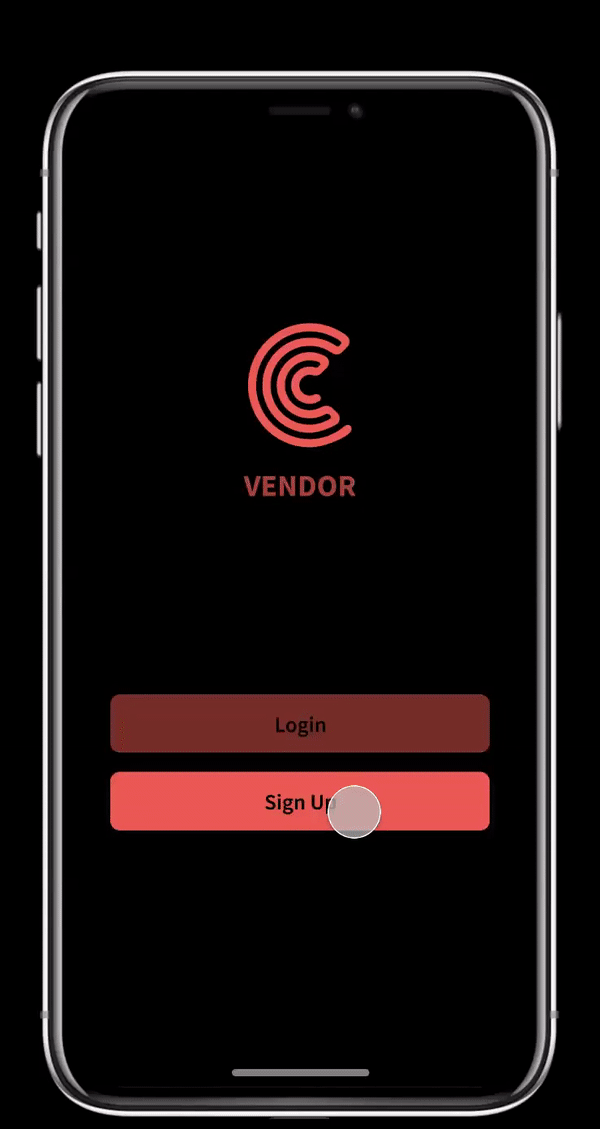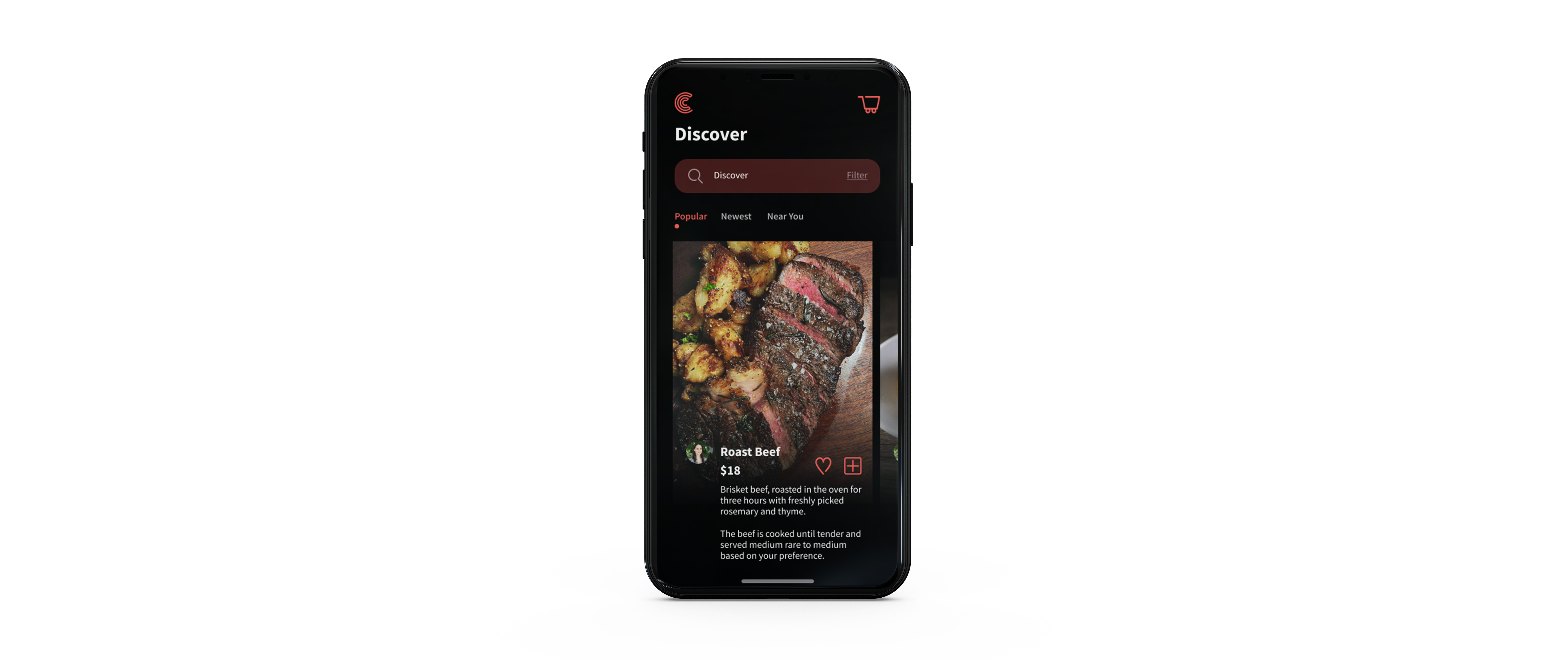
The Objective →
Creating a mobile app for buying and selling homecooked meals.
The
Process →
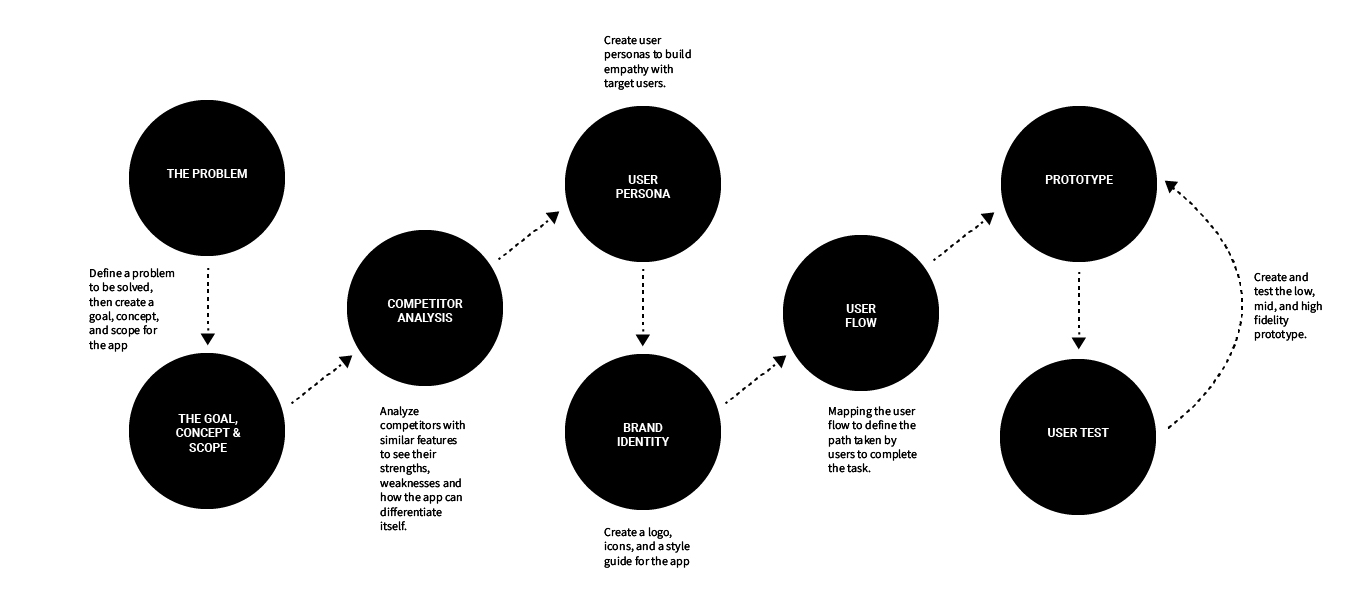
THE PROBLEM →
THE SELLER PERSPECTIVE
Running a restaurant is very hard and challenging. There is no guarantee of success while it requires a long work hour commitment and high startup cost. The pandemic has made the industry that’s never been easy even harder. Many closed their business because they cannot afford operational costs and management.
And due to its high risk, restaurants are often reluctant to innovate a new concept and menu. Instead, many choose to copy the existing concept over and over. This has limited the originality and creativity of the cuisine in the market.
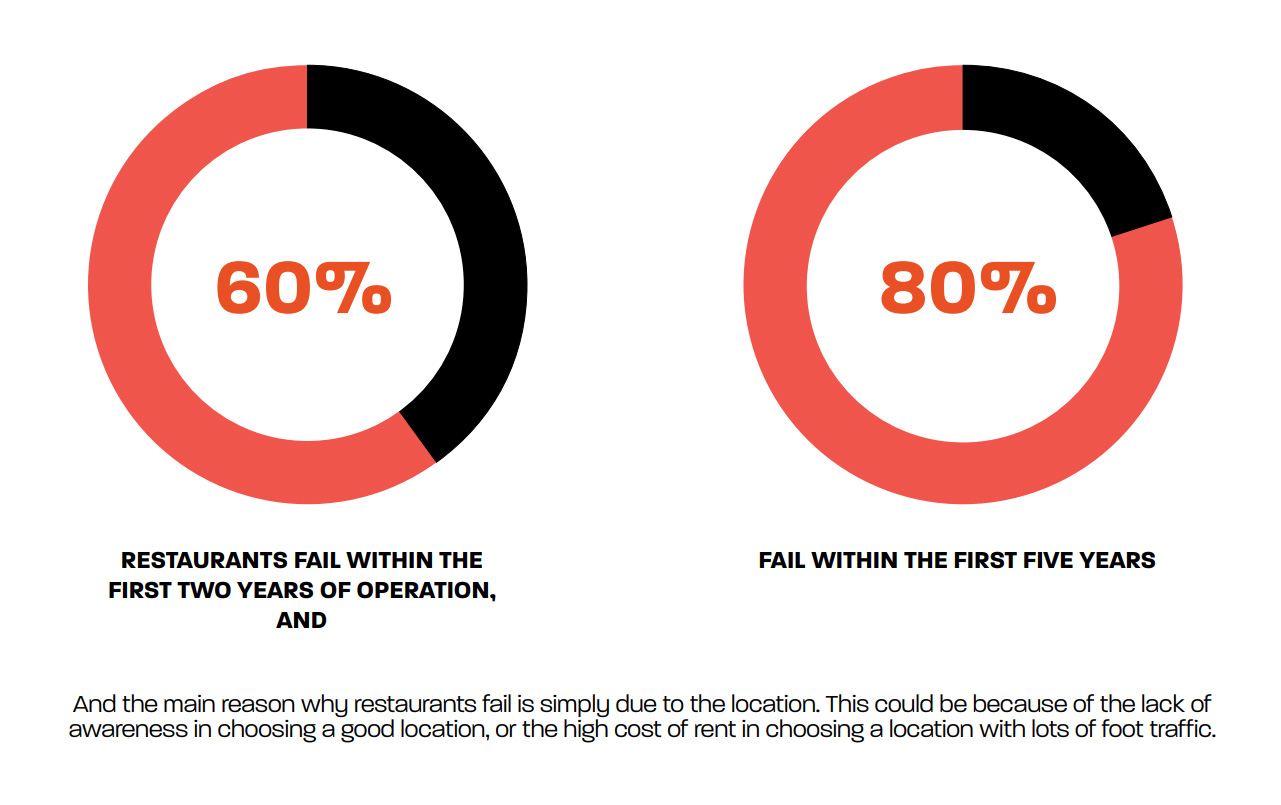
Bellini, Jarrett. “The No. 1 Thing to Consider before Opening a Restaurant.” CNBC, 6 July 2016, www.cnbc. com/2016/01/20/heres-the-real-reason-why-most-restaurants-fail.html
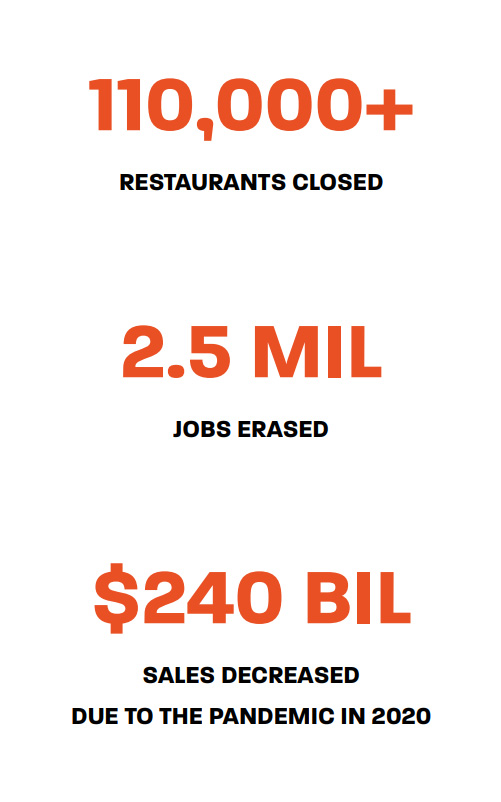
King, Rachel. “More than 110,000 Eating and Drinking Establishments Closed in 2020.” Fortune, 26 Jan. 2021, fortune.com/2021/01/26/restaurants-bars-closed-2020-jobs-lost-how-many-have-closed-us-covid-pandemic-stimulus-unemployment.
THE BUYER PERSPECTIVE
Eating out in America is very expensive.
While not everyone has the time or
the skill to cook at home, there are not
many cheaper alternatives that are
not junk foods. On top of that, the hard
competition in the restaurant industry
makes the restaurants in America try
to attract customers by offering bigger
portions and bolder seasonings.
The impact of this industry is
unhealthy eating habits and higher
food spending among consumers.
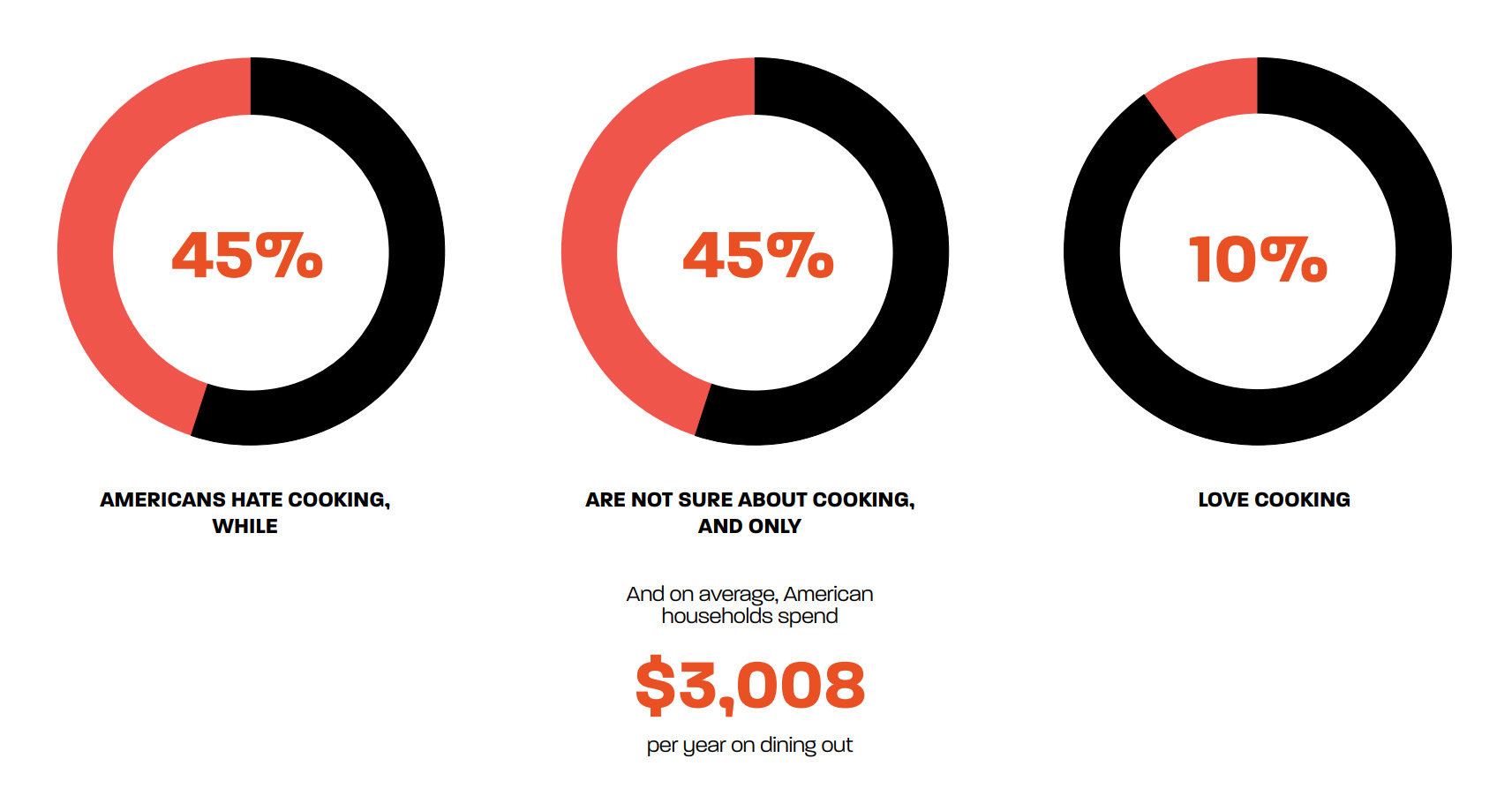
Martin, Emmie. “90% of Americans Don’t like to Cook—and It’s Costing Them Thousands Each Year.” CNBC, 27 Sept. 2017, www.cnbc.com/2017/09/27/how-much-americans-waste-on-dining-out.html
THE GOAL, CONCEPT, & SCOPE →
DEFINE THE PURPOSE OF THE APP FROM THE USERS' PERSPECTIVE
THE SELLERS →
Make running a business cheaper and low-risk while having the flexibility to work at any time of the day.
THE BUYERS →
Purchase foods with lower prices while having more menu varieties to choose from.
DEFINE THE CONCEPT OF THIS PROJECT
The name of this app is COMFOOD. It is the combination of the
word COMFORT and FOOD. It also
pronounces similarly to the word
COMFORT.
The name aligns with the purpose of the
brand, which to provide comfort in the form of
homecooked meals.
This app will have two different interfaces for two types of users. The users will be categorized into buyers or sellers,
thus each group will have a different experience of the app from the other.
DEFINE THE SCOPE OF THIS PROJECT WHICH USERS CAN EXPECT
- Offer instruction and guidance to comply with the law of selling homemade foods depending on the state
- Offer instruction and guidance to acquire the Food Safety Certification
- Allow easy food upload and fast share anytime
- Provide fast and clear notifications upon receiving an order
- Provide smooth and easy payment and communication tools
- Provide the option for pick up or delivery
- Offer an optional insurance plan to protect sellers from customer legal complaint
SELLERS' PERSPECTIVE:
- Offer a wide range of unconventional
menu options - Sell foods at lower prices
- Provide a tool to rate and review the sellers
- Guarantee sellers knowledge of food safety protocols
- Show food options based on location
and distance - Provide the option for pick up or delivery
- Provide smooth and easy payment and communication tools
- Provide time estimate for pick up and deliver
BUYERS' PERSPECTIVE:
Competitive Analysis →
ANALYZE COMPETITORS' STRENGTHS AND WEAKNESSES AND PLAN HOW TO MAKE THE APP STANDS OUT IN THE MARKET.
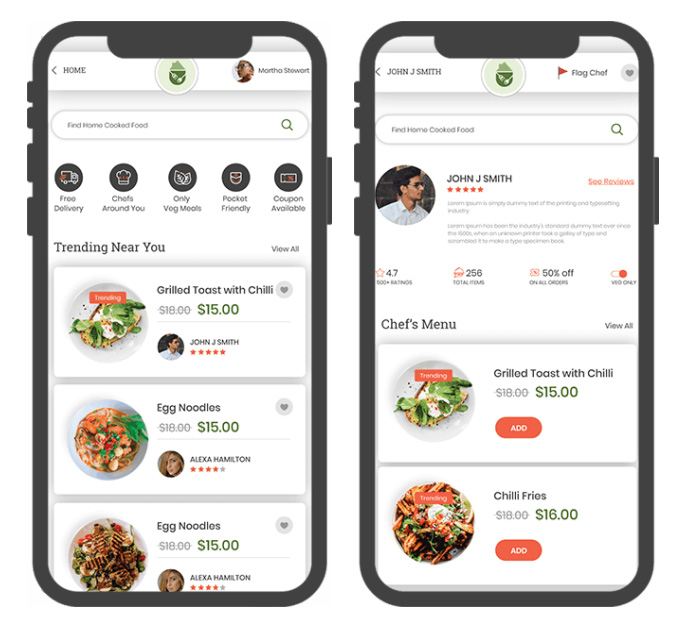
OVERVIEW
“The HomeMade food app is a new way to order takeout that delivers fresh and wholesome food, made by home chefs in your neighborhood, straight to your door. Discover local home cooks nearby, browse their unique menus, and let them handle the cooking for you!”
STRENGTHS
The app claims to allow users to personalize their preferences such as vegan, vegetarian, allergen or dairy-free, track foods in real time check the status of the orders, and offer events and deals such as private dinners, backyard barbecues, cooking workshops, and more.
WEAKNESSES
After downloading the app, the first thing it asked me to do is to put in my phone numbers. The app is rated 1.6 stars with most reviews complain about how this app is too upfront in getting the users’ information. I also could not access the app because apparently the app is not available in my location
FUTURE THREATS
The app did not do well in marketing itself, thus it would be easy for a newcomer with a good marketing team to take over its market.
HOW THIS PROJECT CAN DIFFERENTIATE ITSELF
Comfood would create an interface that gains the users’ trust. Comfood also allows the customers to peek inside the app even when the service is not available in the area yet. That way, people would consider becoming the first user in a particular area. Comfood would also encourage first users to join by giving them some perks because Comfood understands that engagement is important for the success of the app
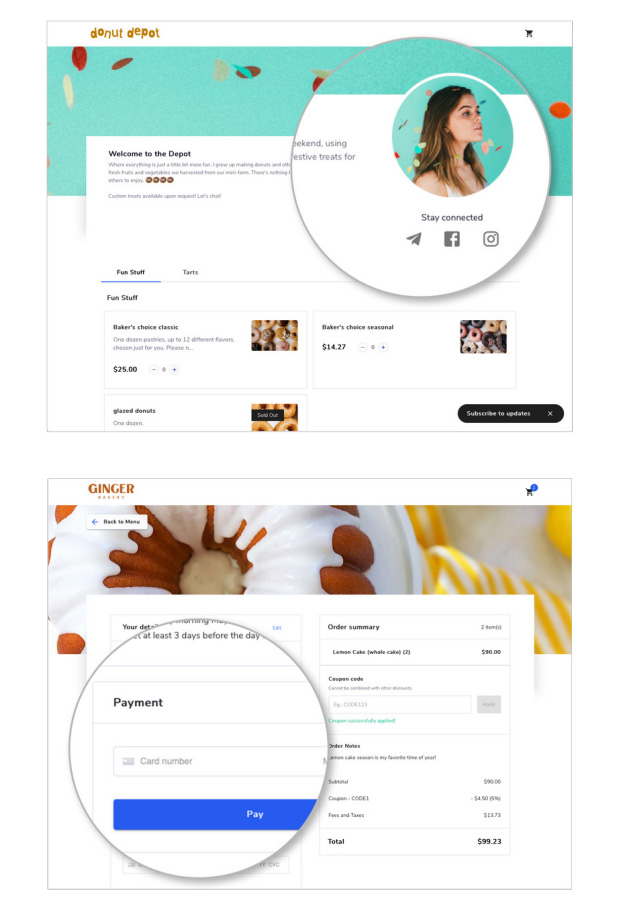
OVERVIEW
“Castiron is a software platform purpose-built to help independent food artisans start, build, and grow their businesses.”
STRENGTHS
The app claims to be completely free. It provides the sellers a nice-looking website that looks professional. It also provides tools to create an aesthetically pleasing presentation.
WEAKNESSES
This is not an app. From what I can understand, this is a website e-commerce platform similar to Shopify but was made to sell foods. This platform does not provide take-out or delivery. Thus, the type of foods that are being sold are limited since the foods need to be shipped. It is also hard to find any information about this company due to the brand name that has an association with a cooking tool.
FUTURE THREATS
The app cannot compete with many of the popular e-commerce platforms such as Shopify, Square Space, Wix, etc due to the limitation of the concept (foods).
HOW THIS PROJECT CAN DIFFERENTIATE ITSELF
Comfood allows users to sell any kind of food and bring the food to the customers fresh. Also, the app platform has fewer competitors than website e-commerce platforms.
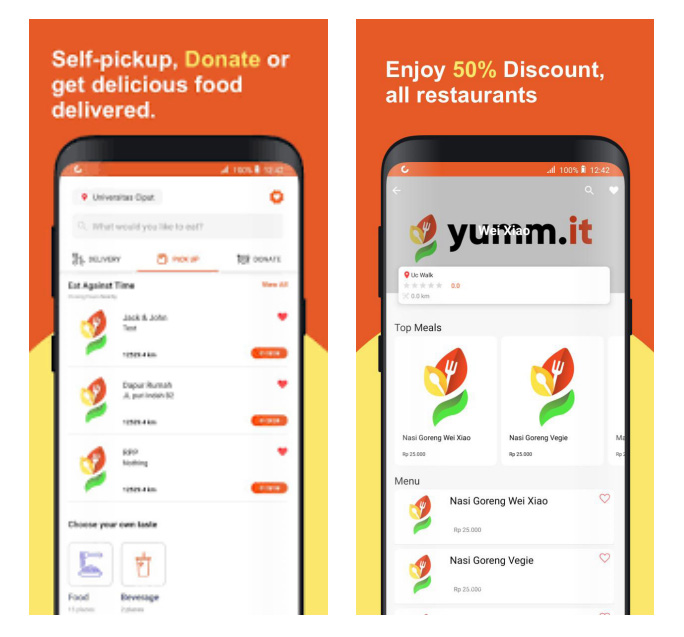
OVERVIEW
“Yummit allows you to run your own takeaway from your kitchen. If you’ve got a passion for cooking, and a kitchen, you’ve now got your very own food business. You decide your menu, your prices and your schedule. Start selling for free, we only take a small cut once you start making sales.”
STRENGTHS
The app claims to comply with the food safety regulations. It also promises secure payments. It requires photos for every food and encourages ratings and feedbacks.
WEAKNESSES
This app cannot be found on Apple Store or Google Play, thus I could not investigate any further. I also could not find any reviews online.
FUTURE THREATS
Most users downloaded their apps from Apple Store or Google Play. An app that is not available in the main stores will have a hard time competing with an app that is easily accessible.
HOW THIS PROJECT CAN DIFFERENTIATE ITSELF
Comfood will focus on its app’s exposure instead of its website like Yummit did. Although many features of Comfood overlaps with Yummit, Comfood offers guidance and protection for the sellers.
USER PERSONA →
Create user personas to build empathy with target users.
SELLER PERSONA
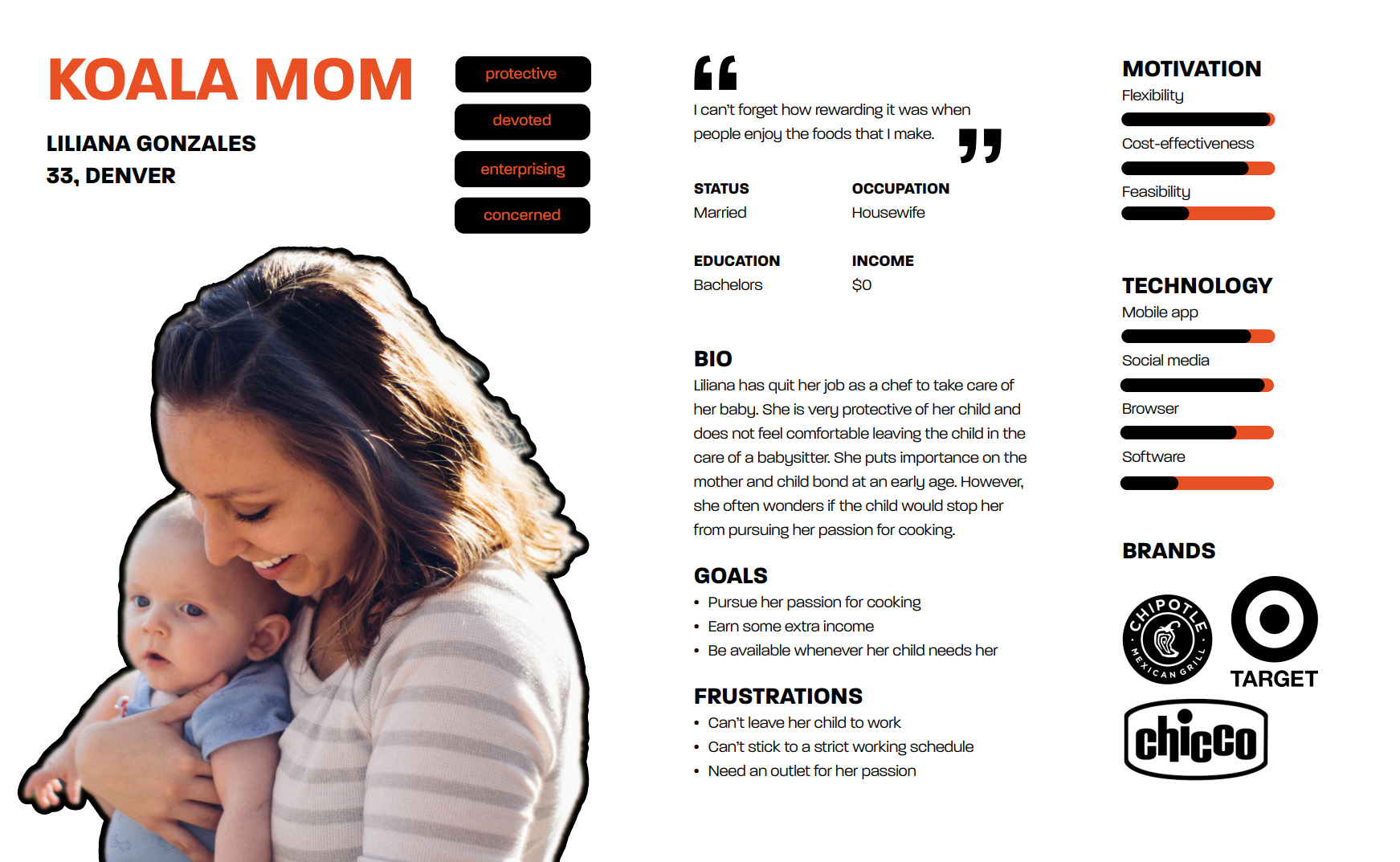
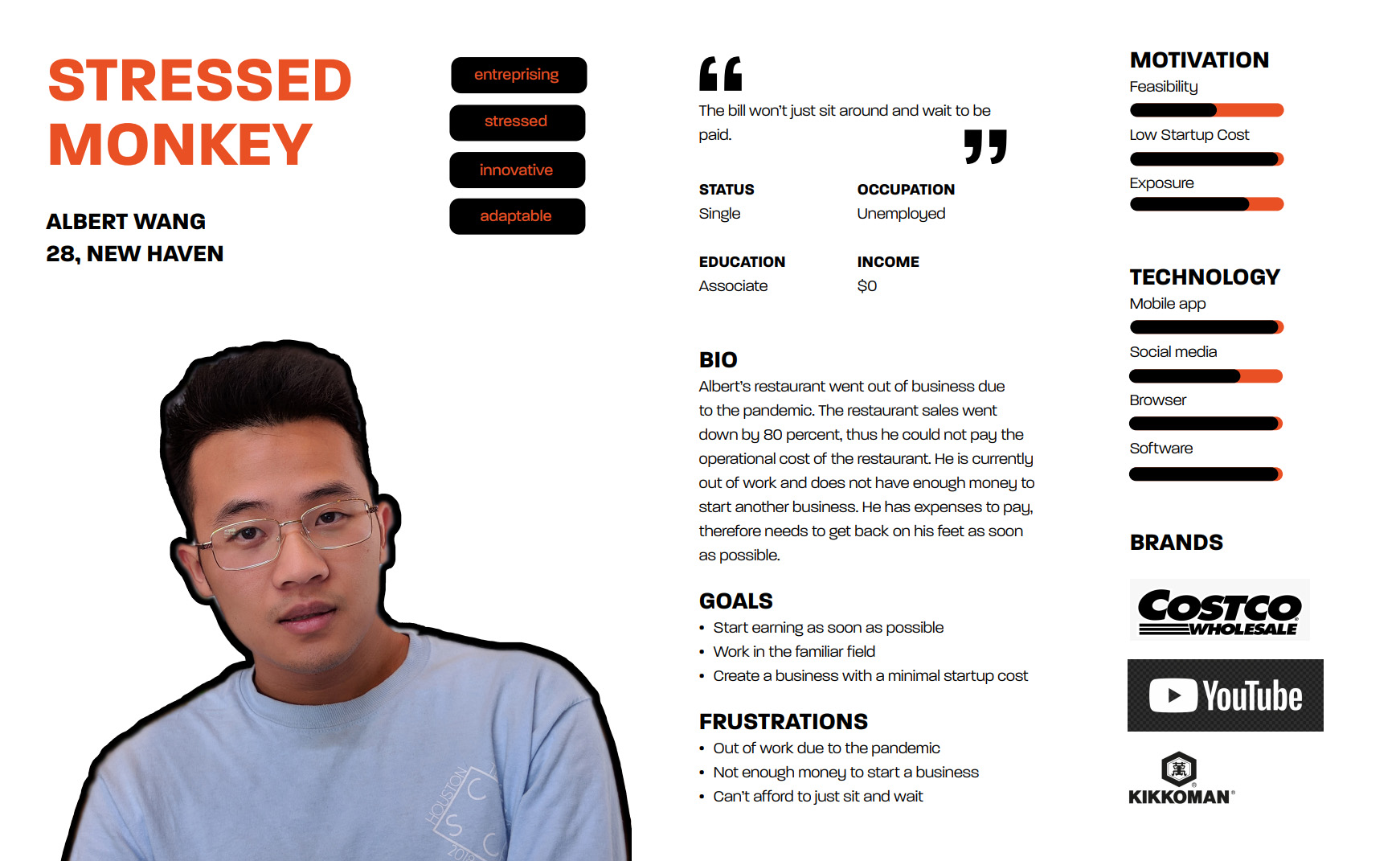
BUYER PERSONA
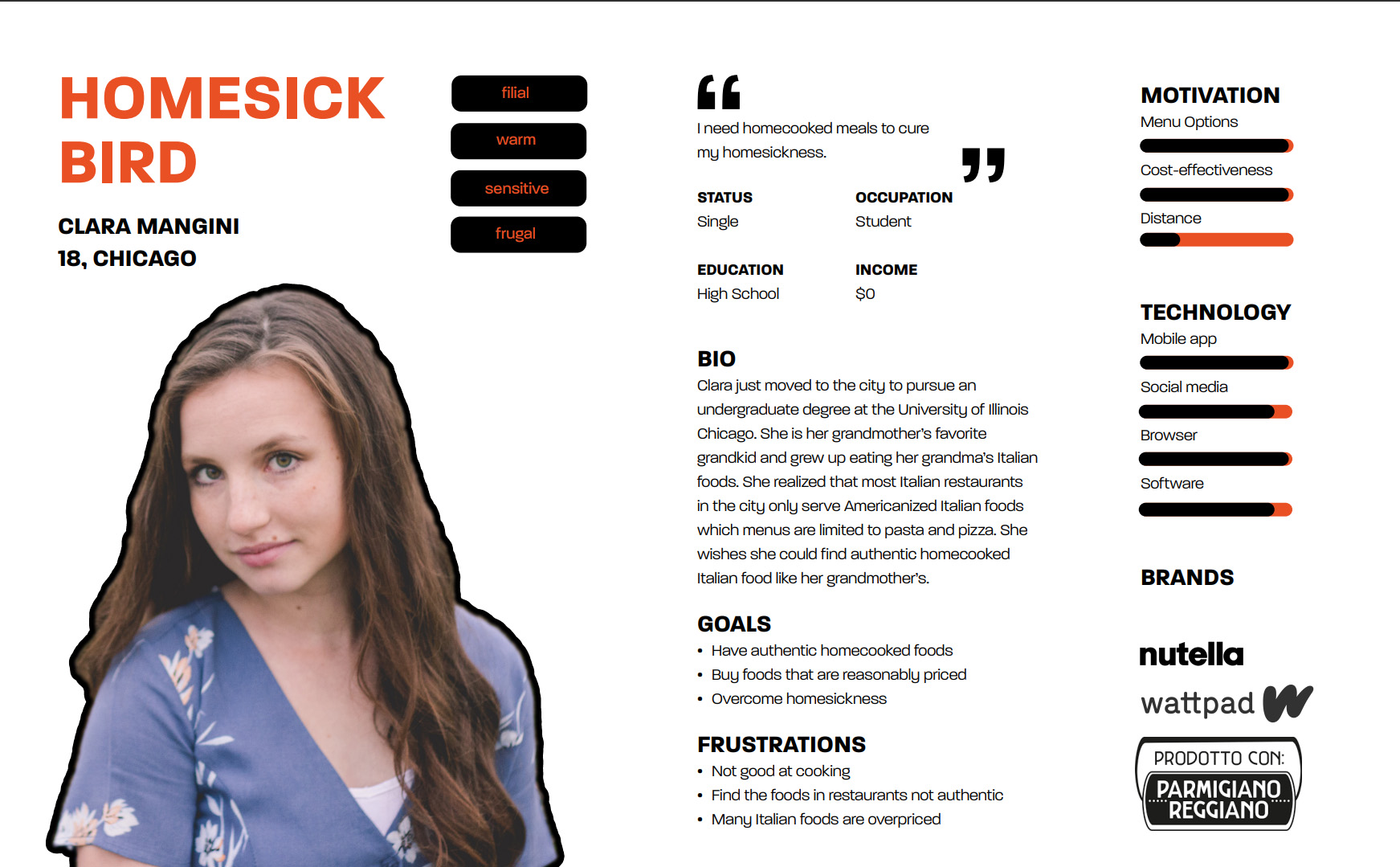
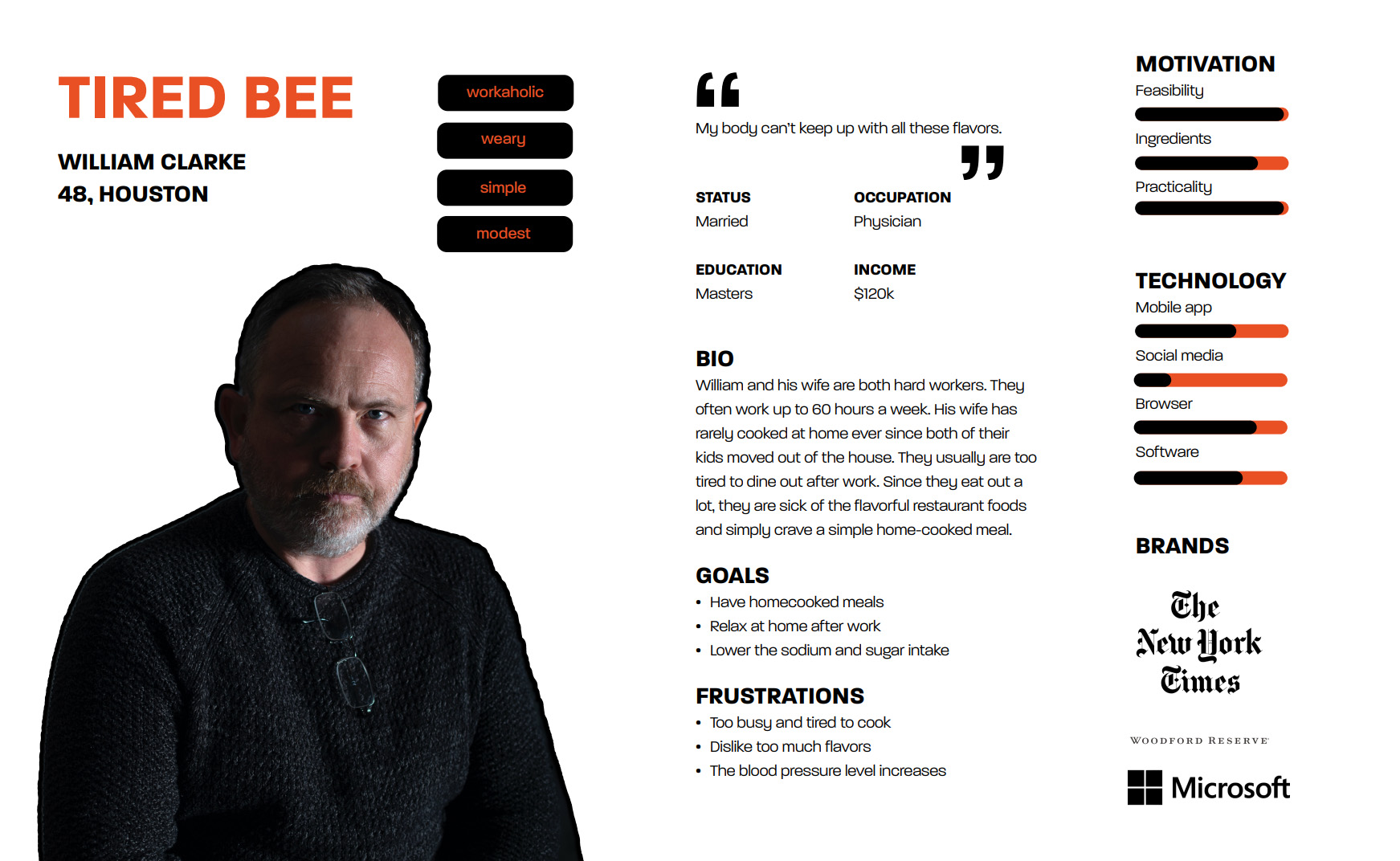
BRAND IDENTITY →
Create a logo, icons, and a style guide for the app.
First, start with a moodboard to create a visual theme.
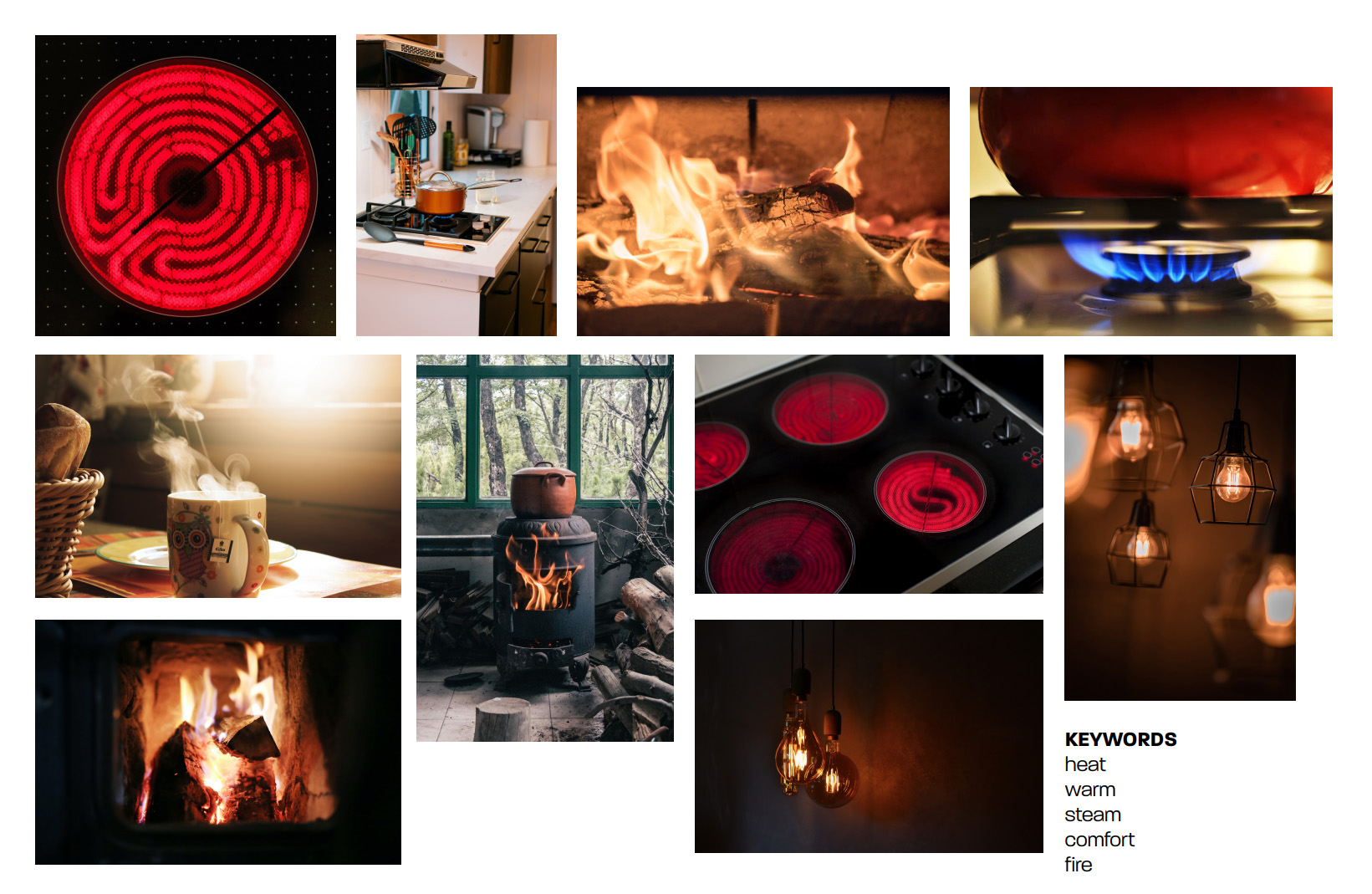
Digitally sketch the logo.
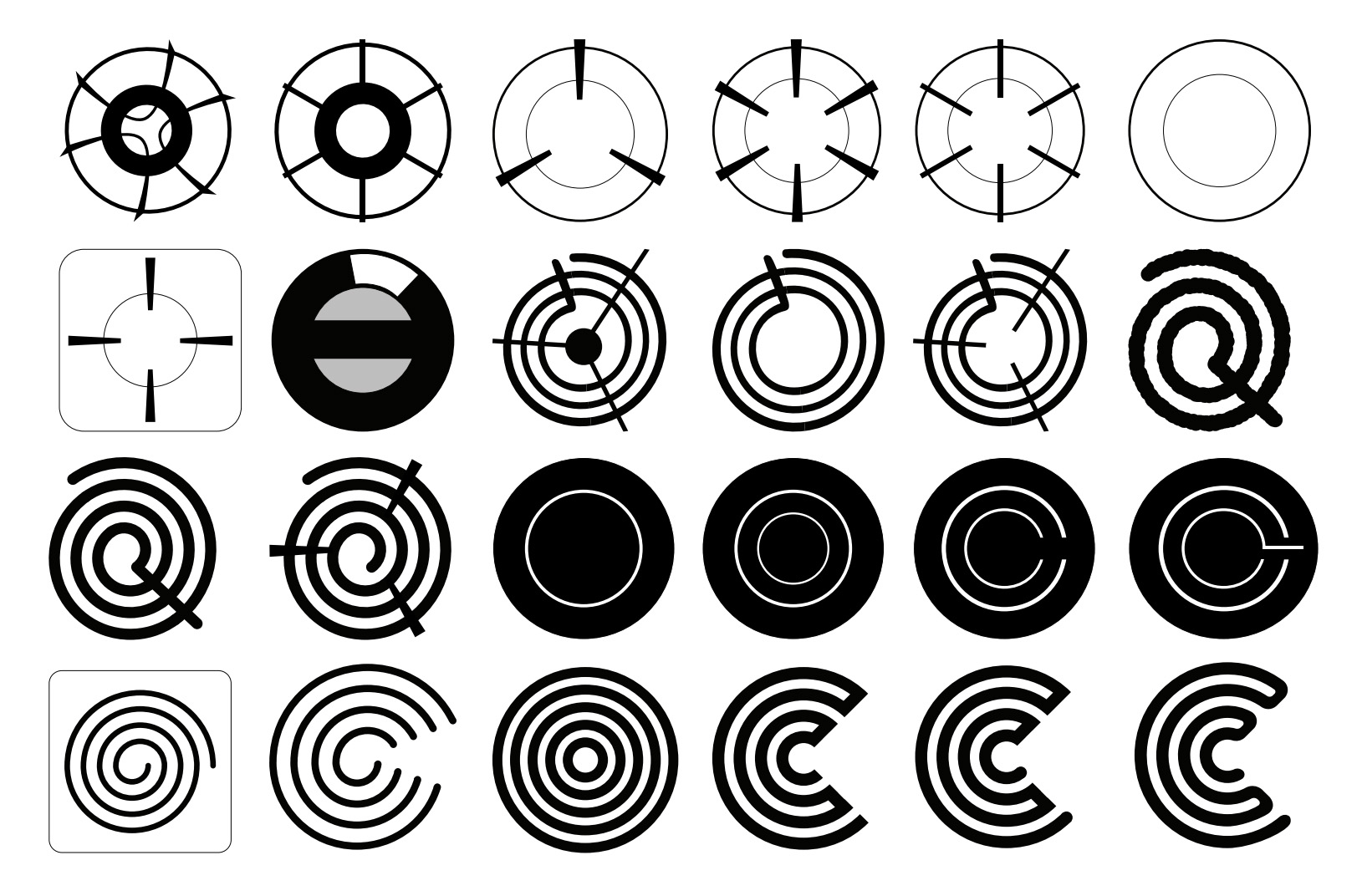
THE APP ICON AND LOGO VARIATIONS.
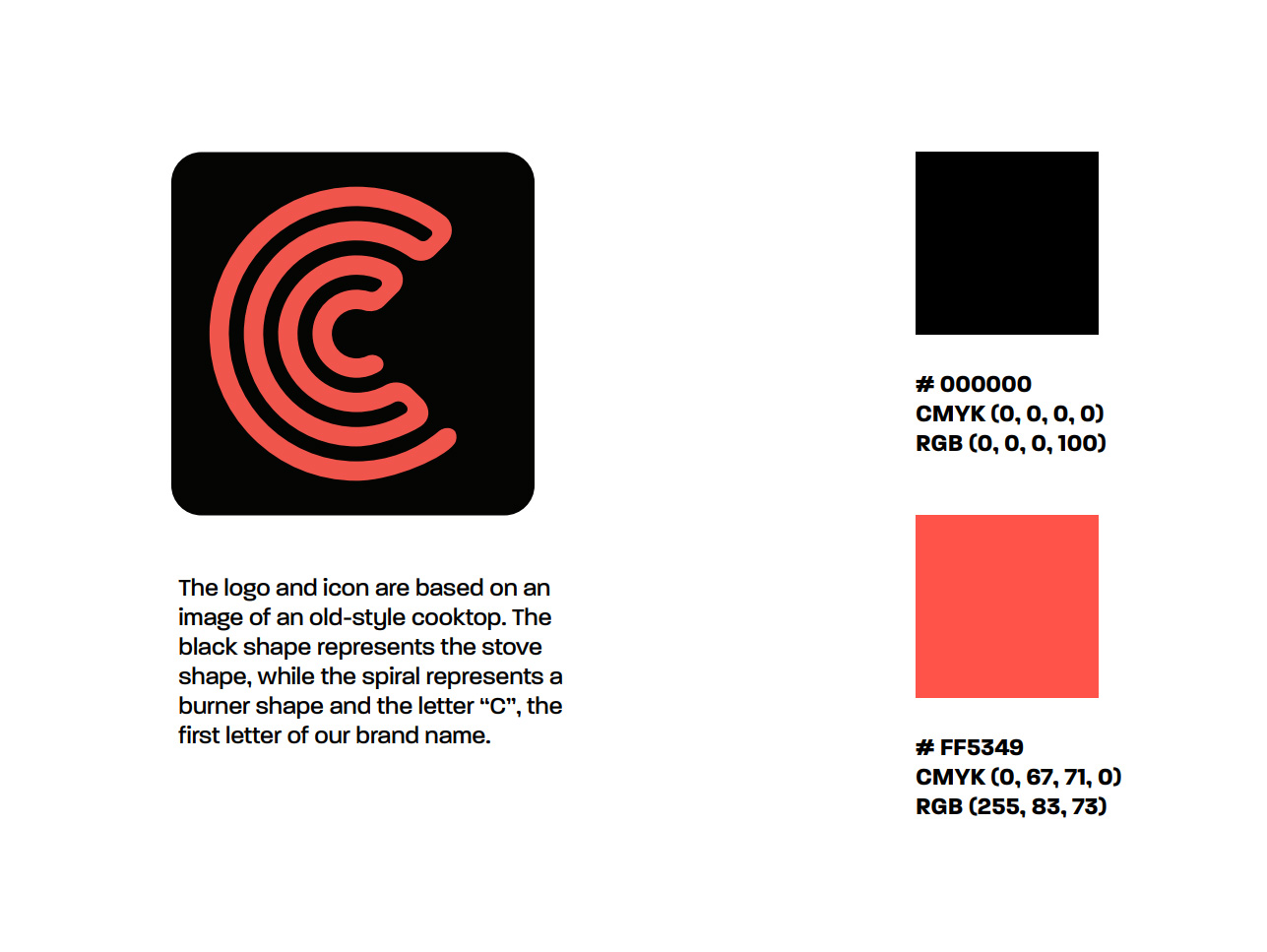
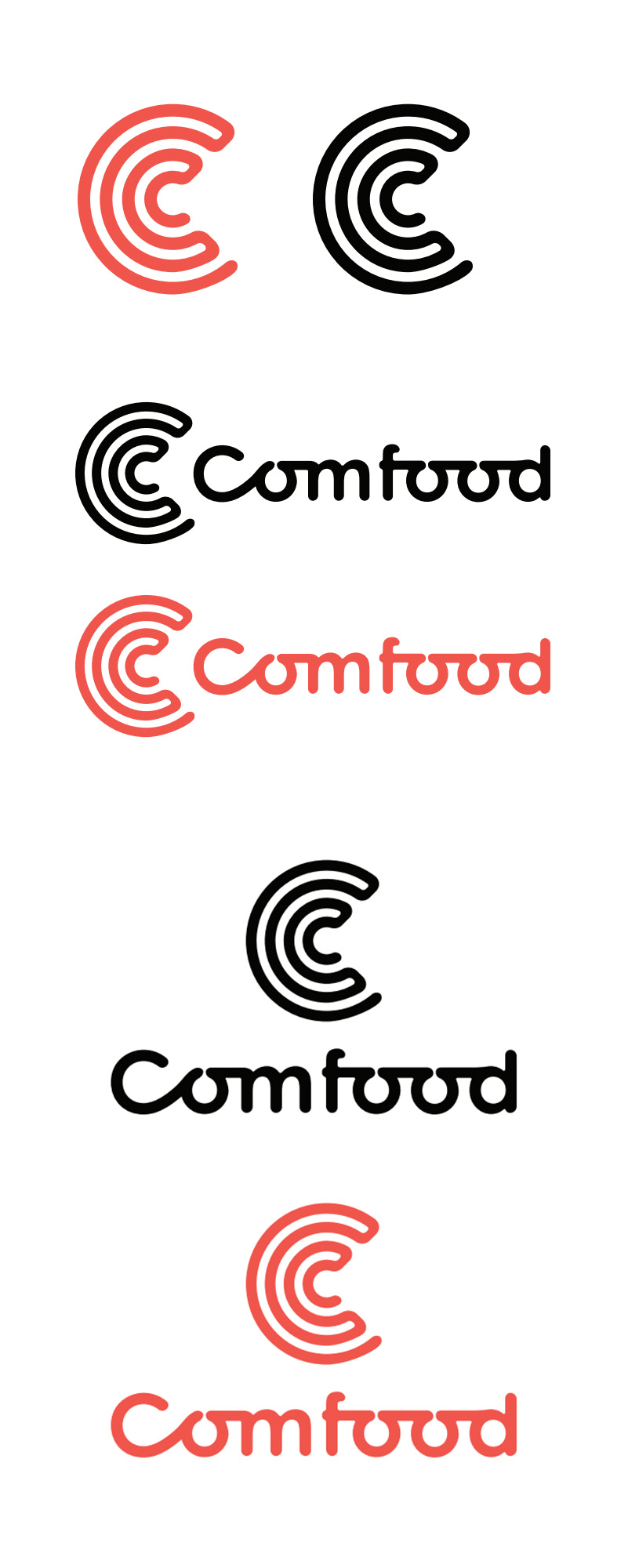
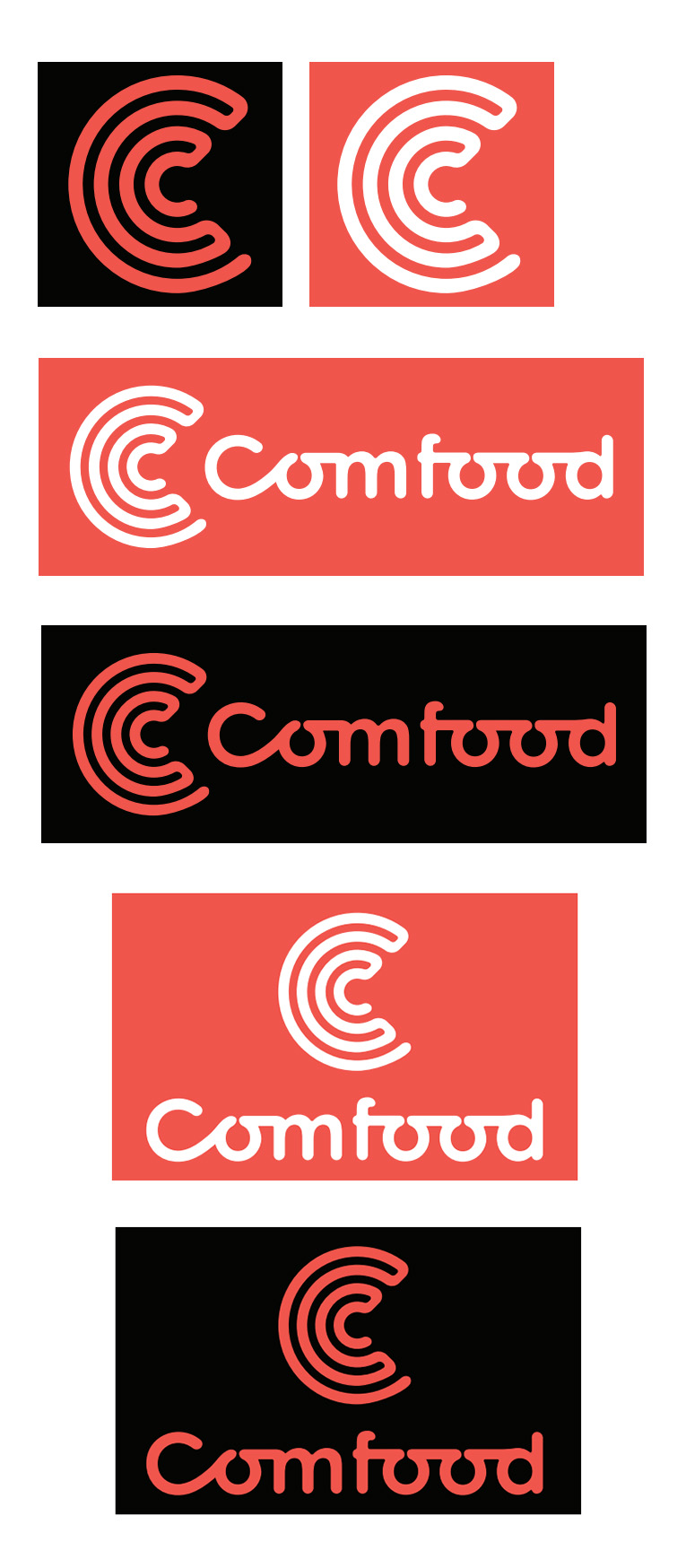
CREATE APP ICON BUTTONS THAT ARE CONSISTENT WITH THE LOGO VISUAL.
CREATE A STYLE GUIDE.
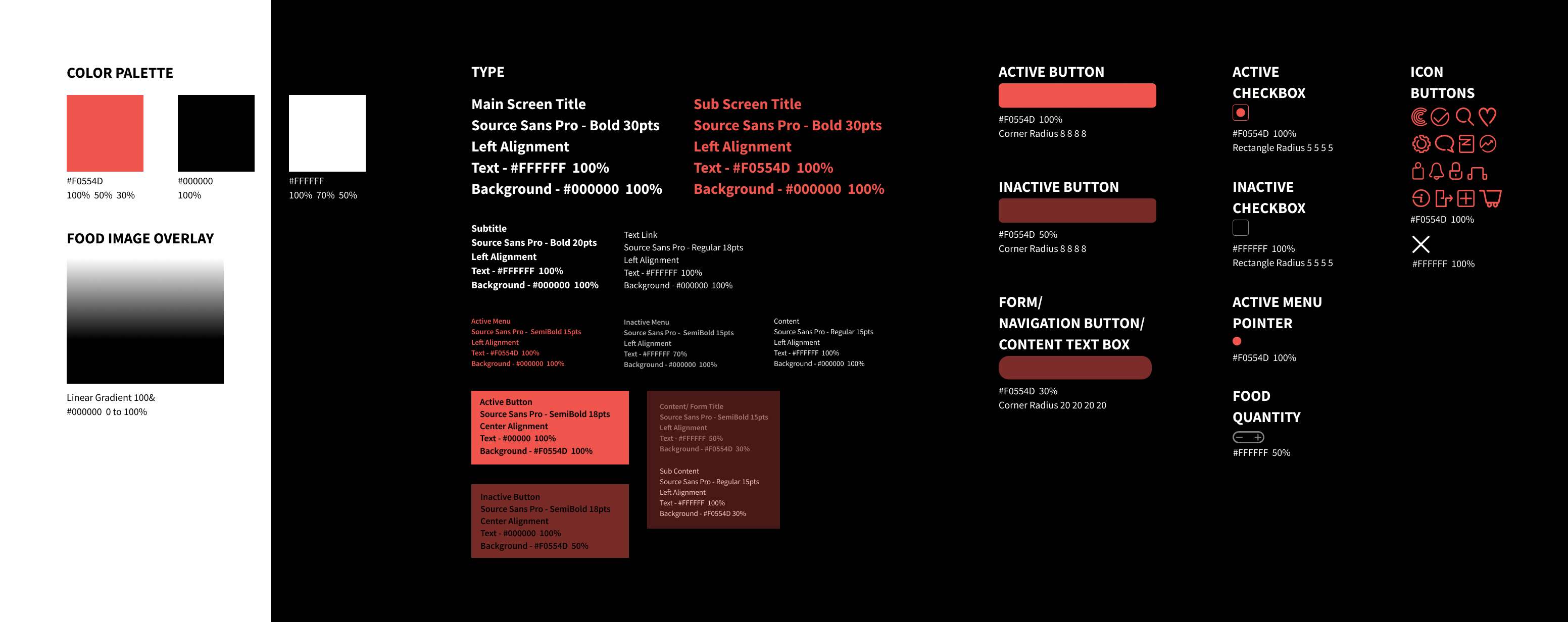
USER FLOW →
Map the user flow to define the path taken by users to complete the task.
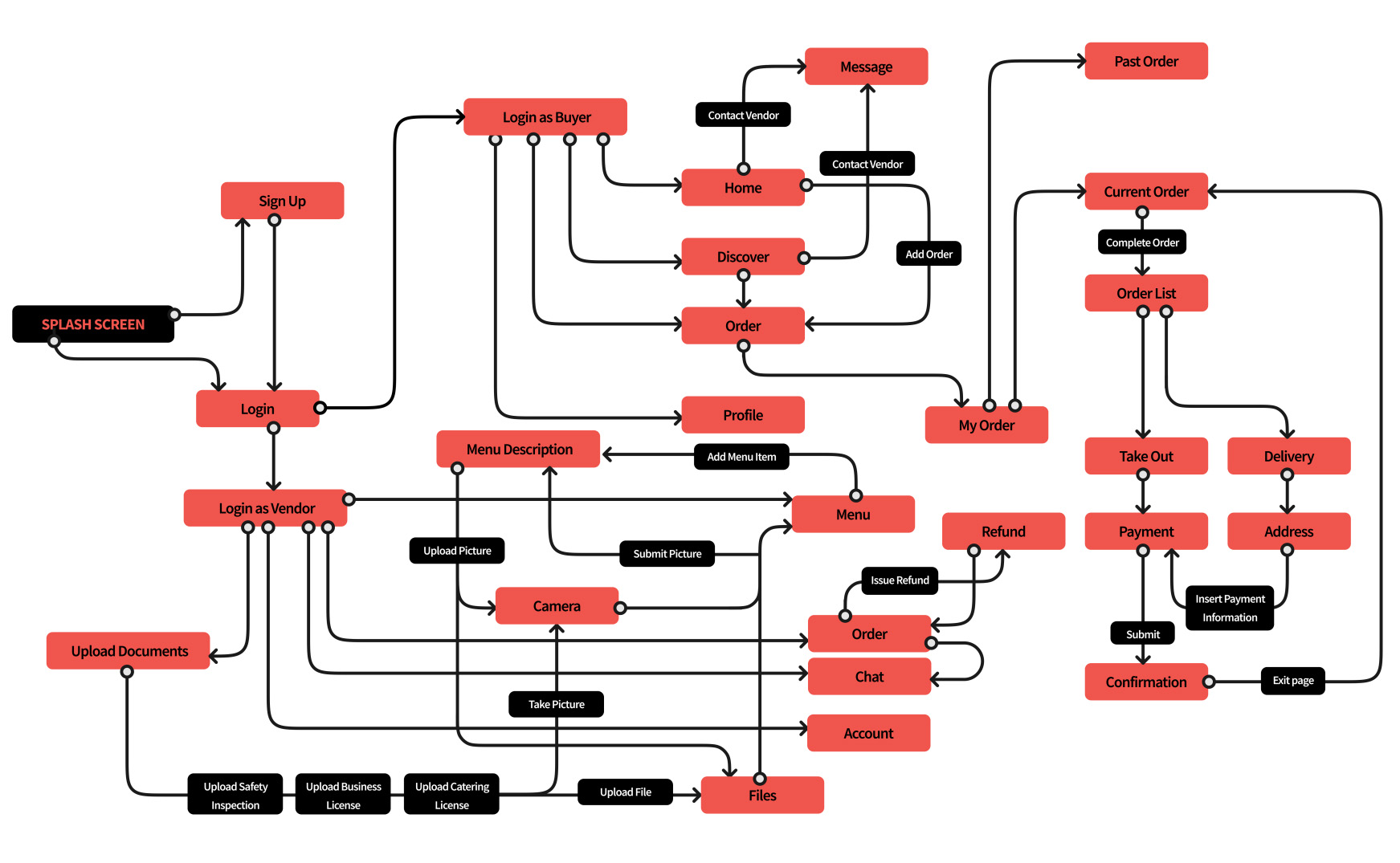
LO-FI WIREFRAME →
Create a low-fidelity, hand-drawn sketched, wireframe to quickly share the idea to users.
BUYER WIREFRAME
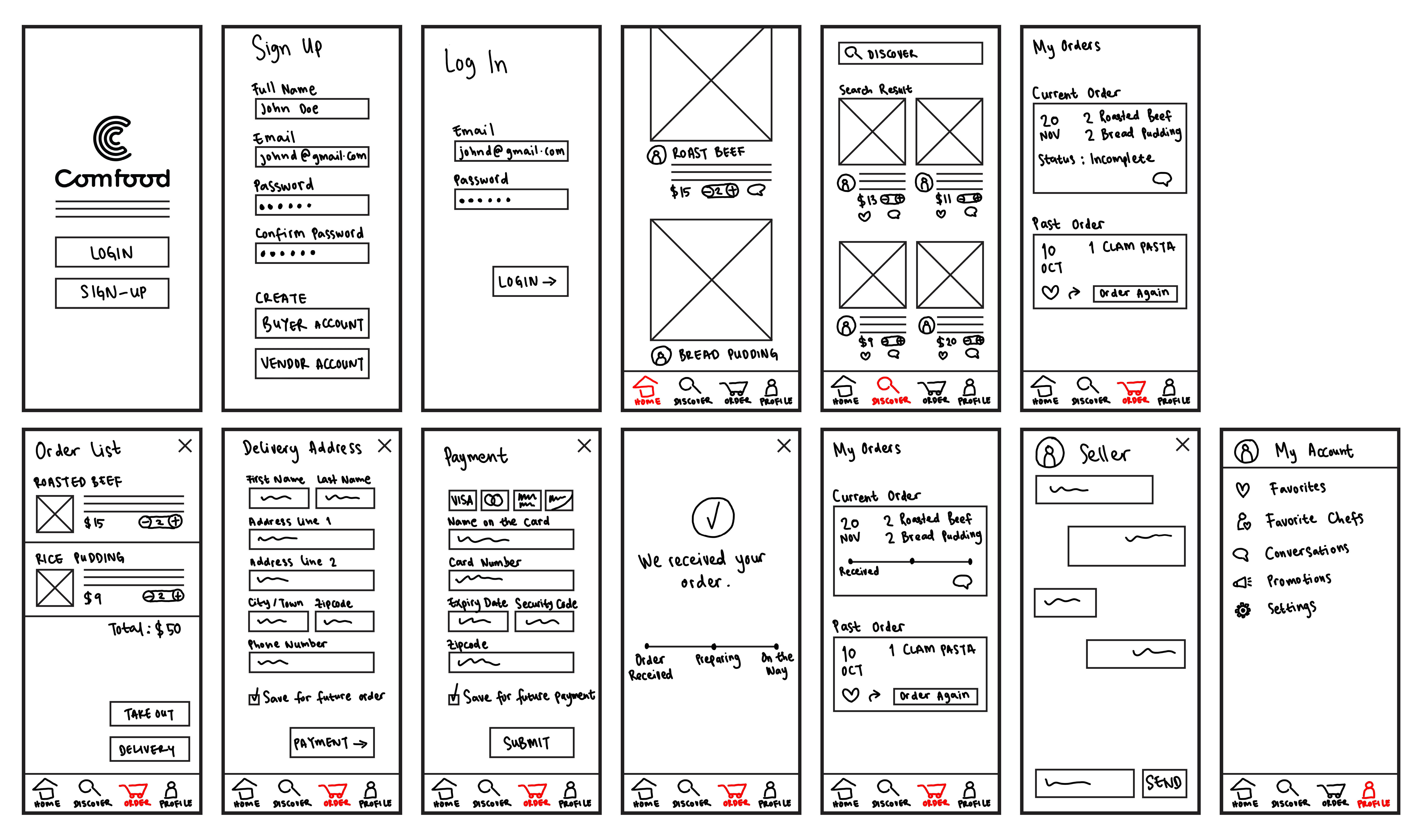
SELLER WIREFRAME
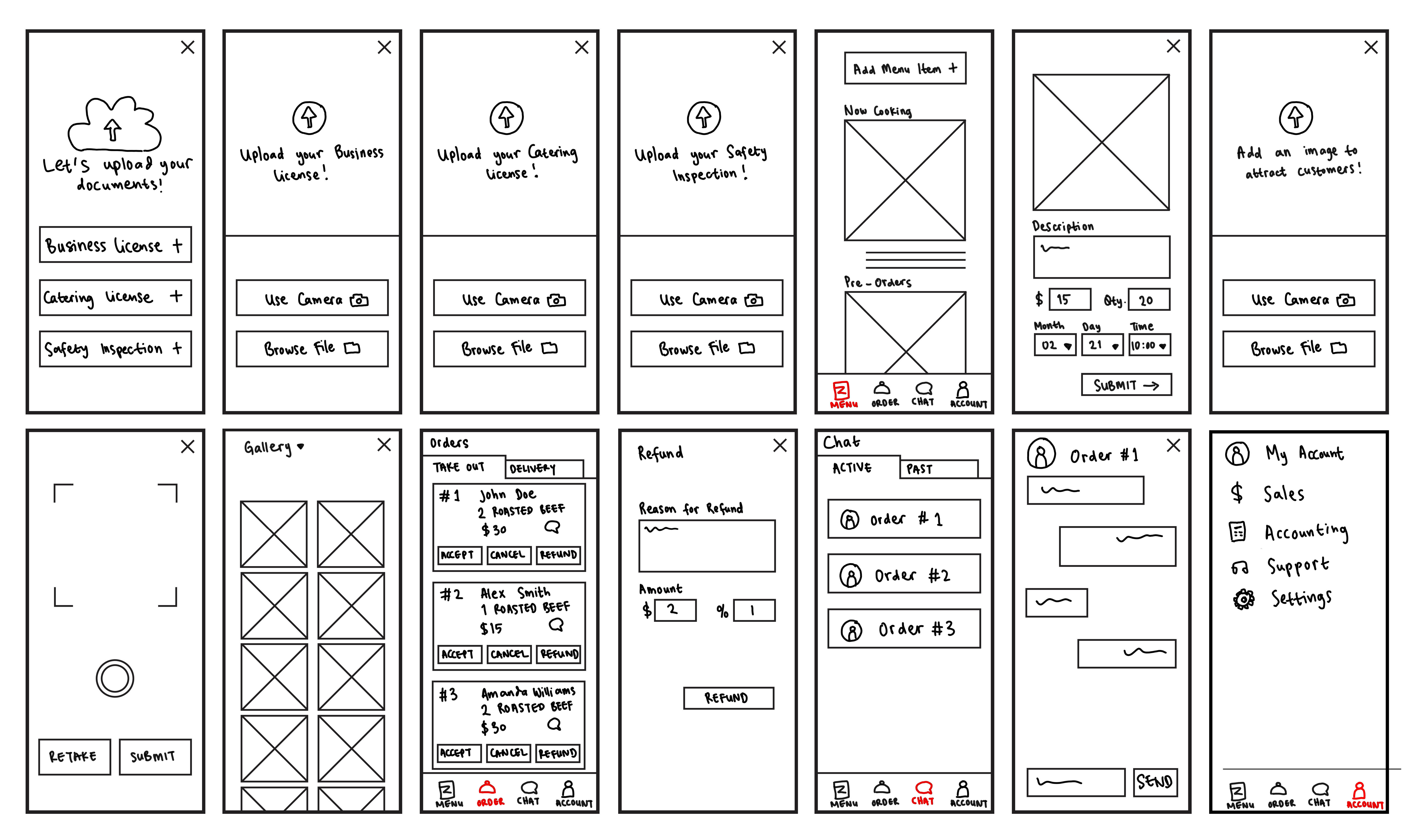
UPLOAD THE SKETCHED WIREFRAME TO THE MARVEL APP TO CREATE AN INTERACTIVE PROTOTYPE. CONDUCT A TEST BY ASKING USERS TO OPEN THE PROTOTYPE USING THEIR PHONE.
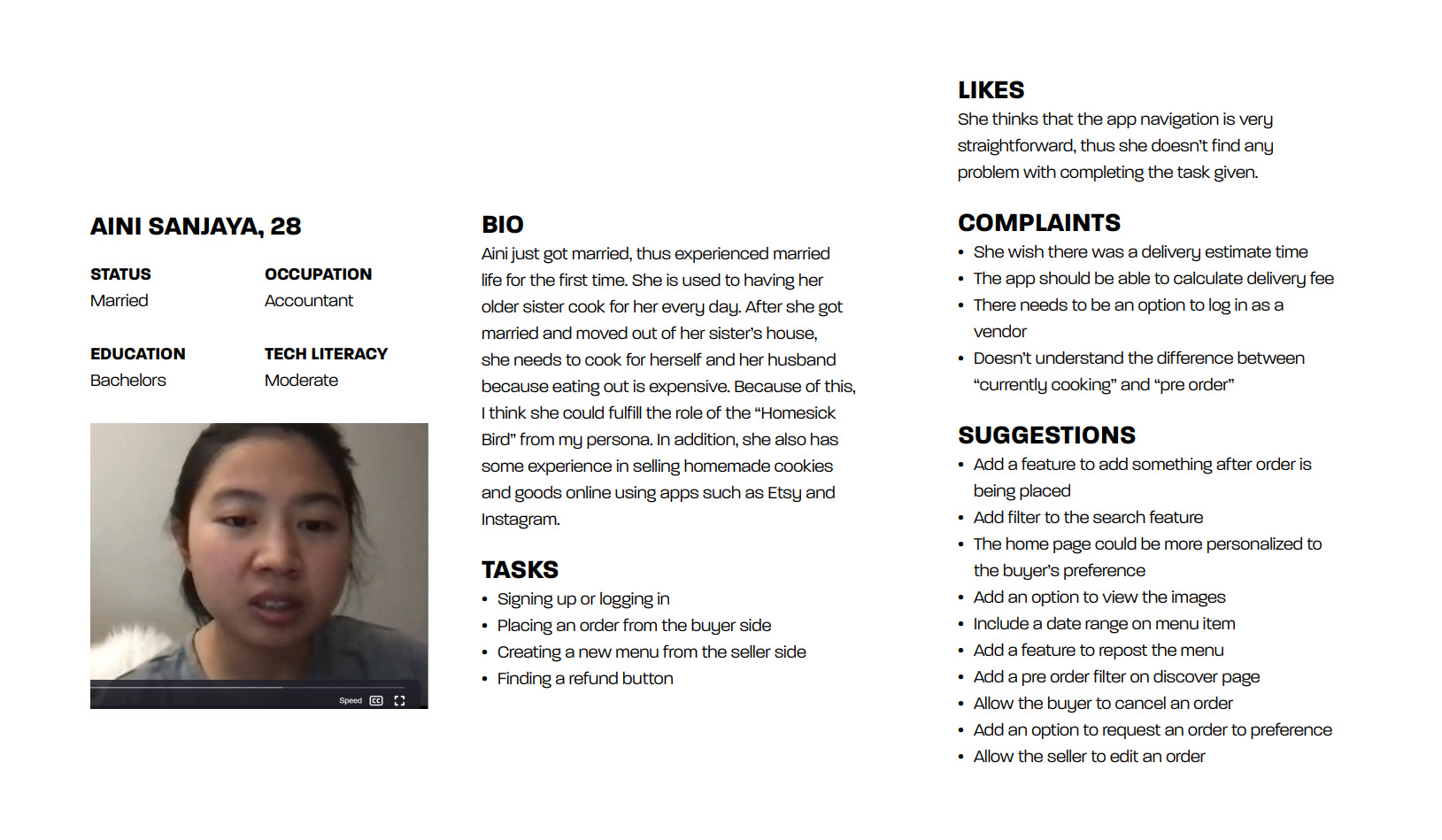
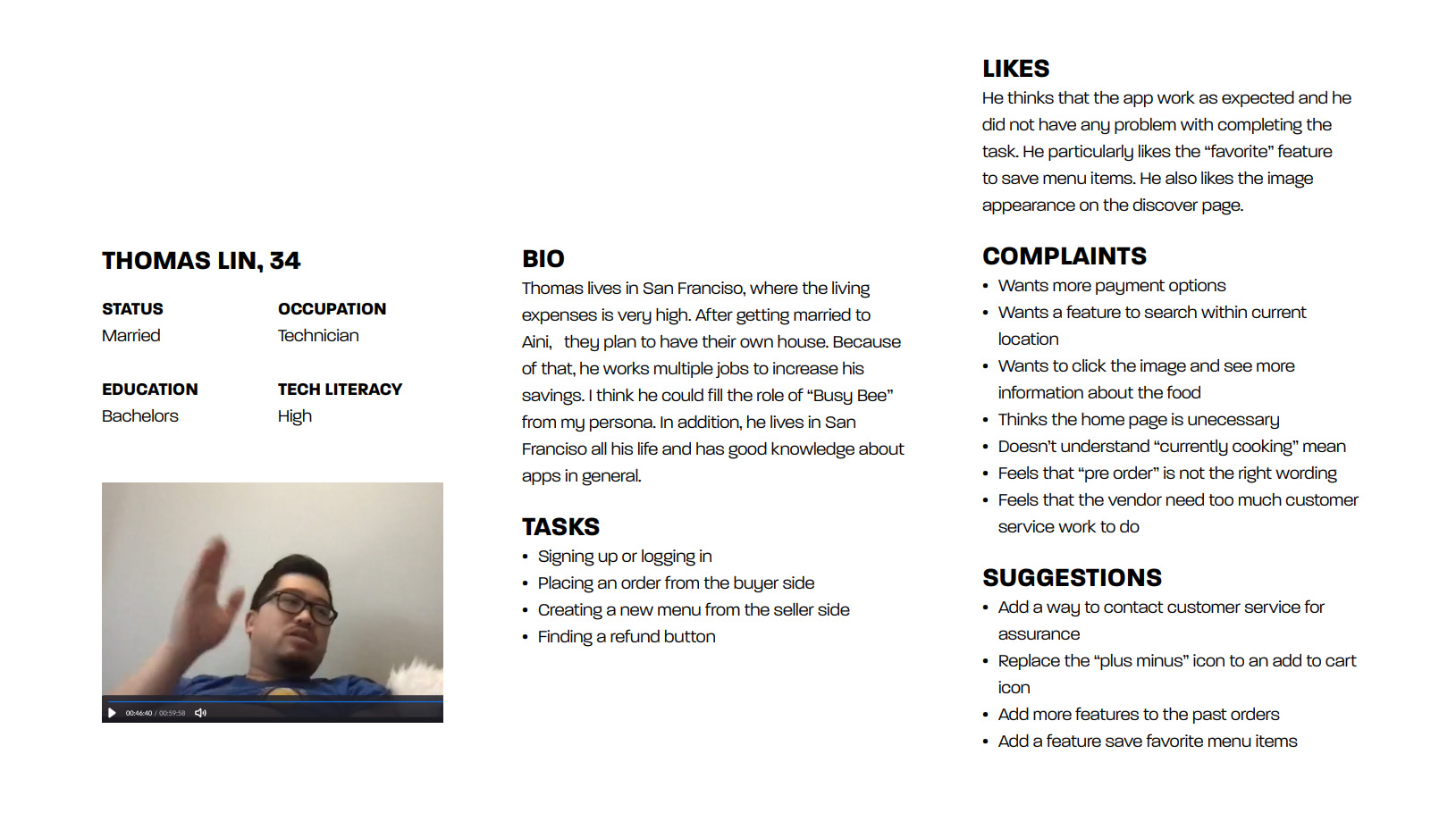
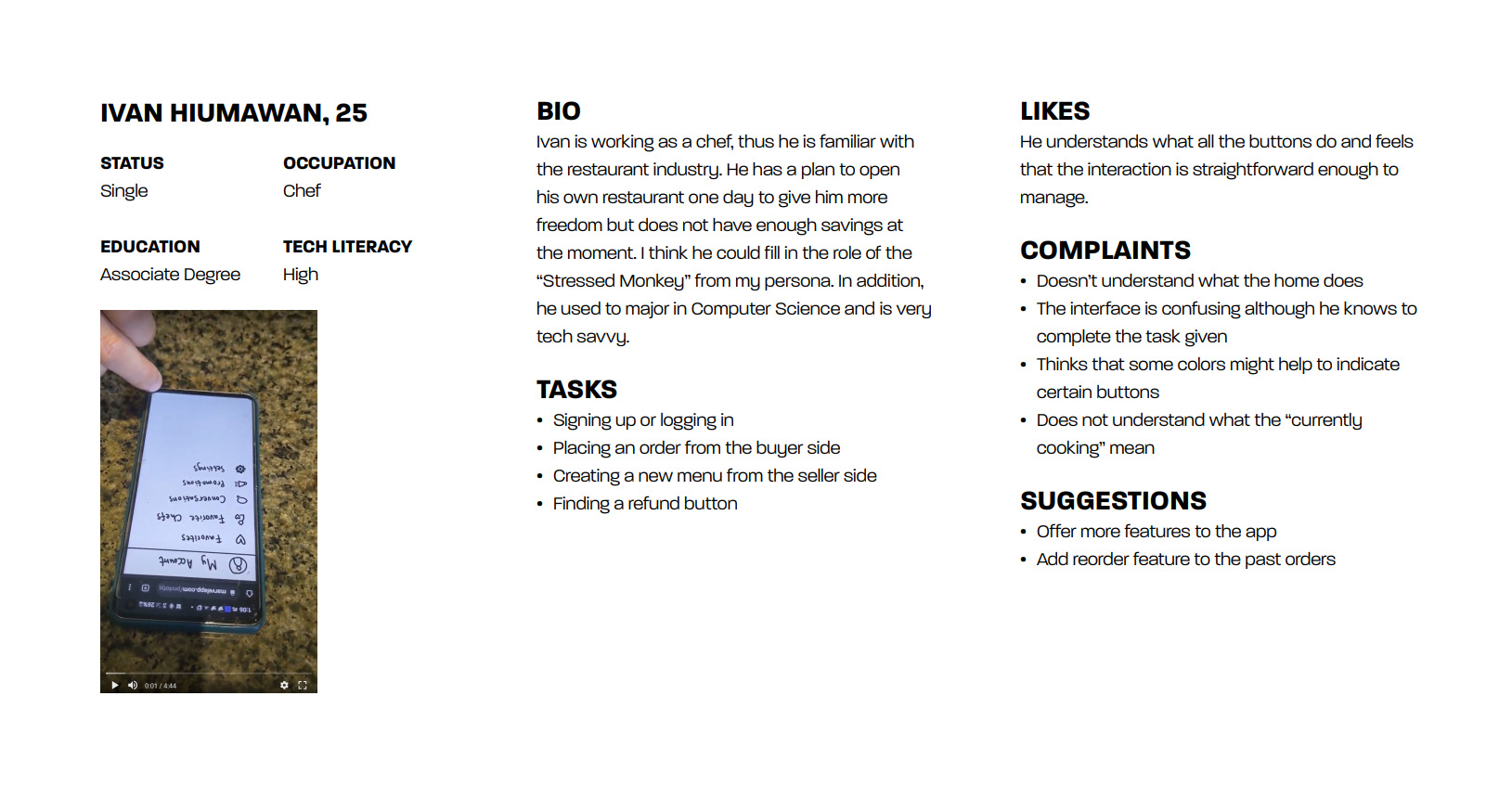
MID-FI WIREFRAME →
TAKE USERS' SUGGESTIONS
AND APPLY THEM TO MID-FIDELITY WIREFRAME.
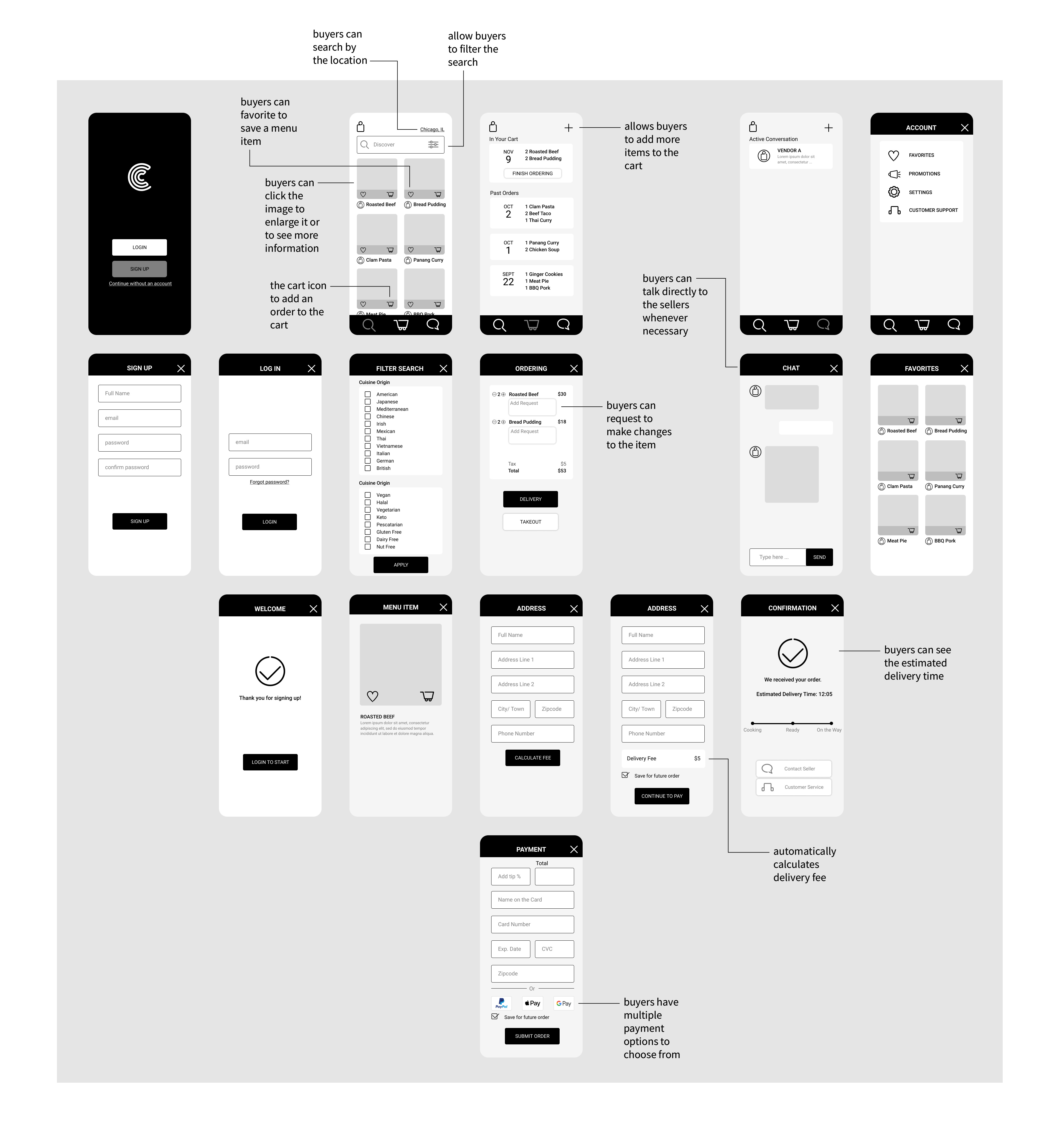
SELLER WIREFRAME.
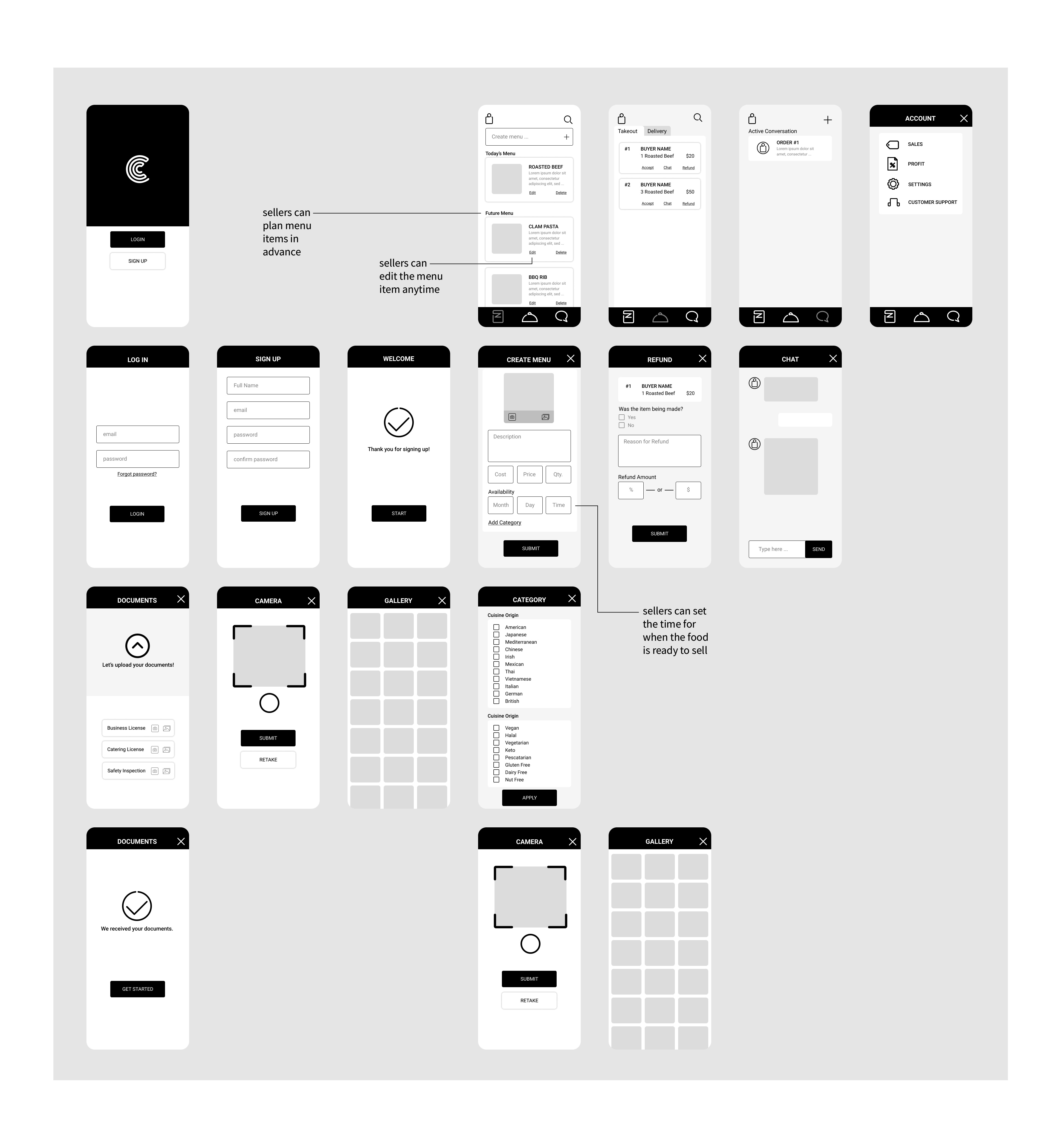
ASK USERS TO TEST THE PROTOTYPE ON FIGMA FOR FEEDBACKS.
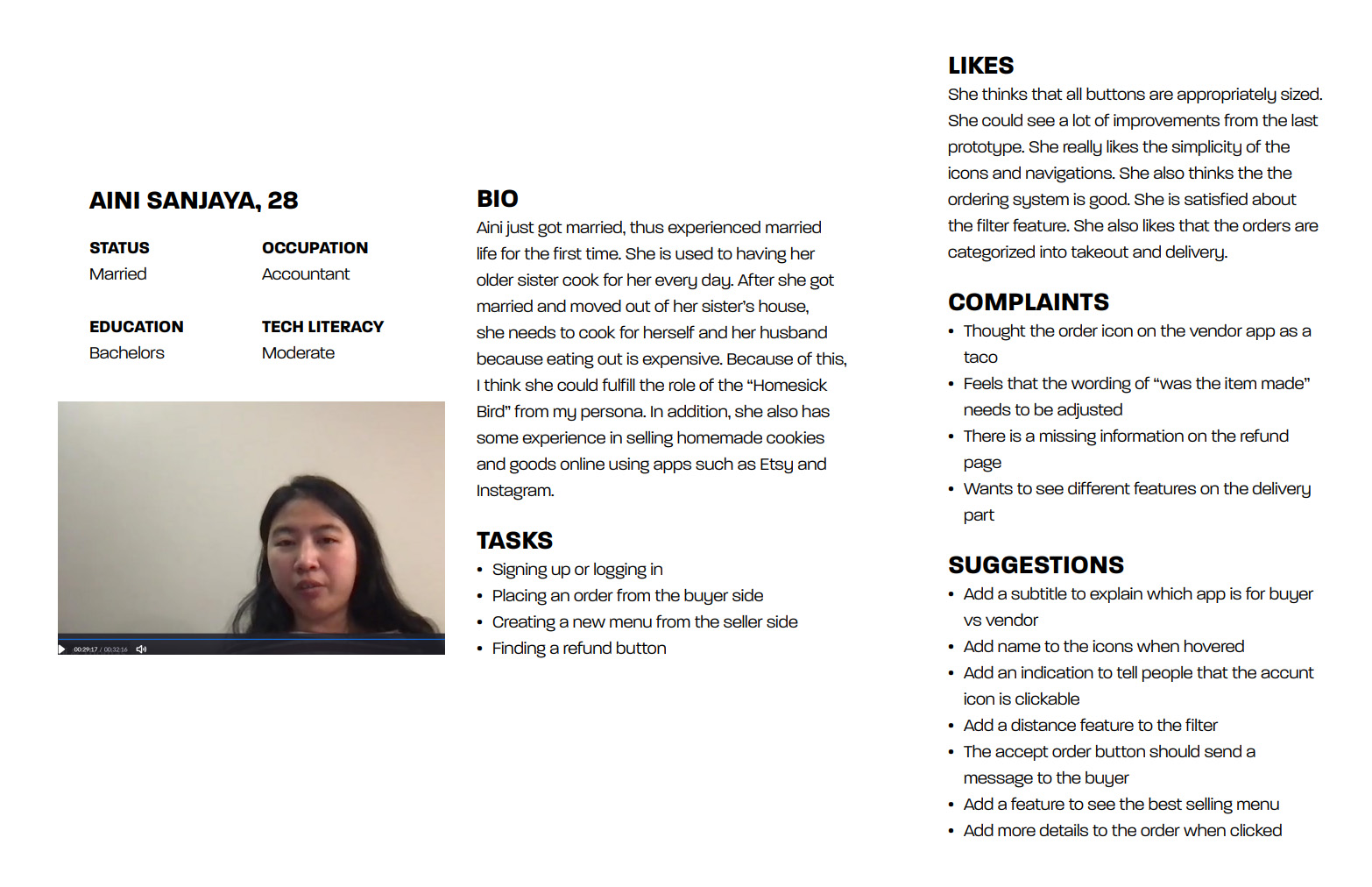
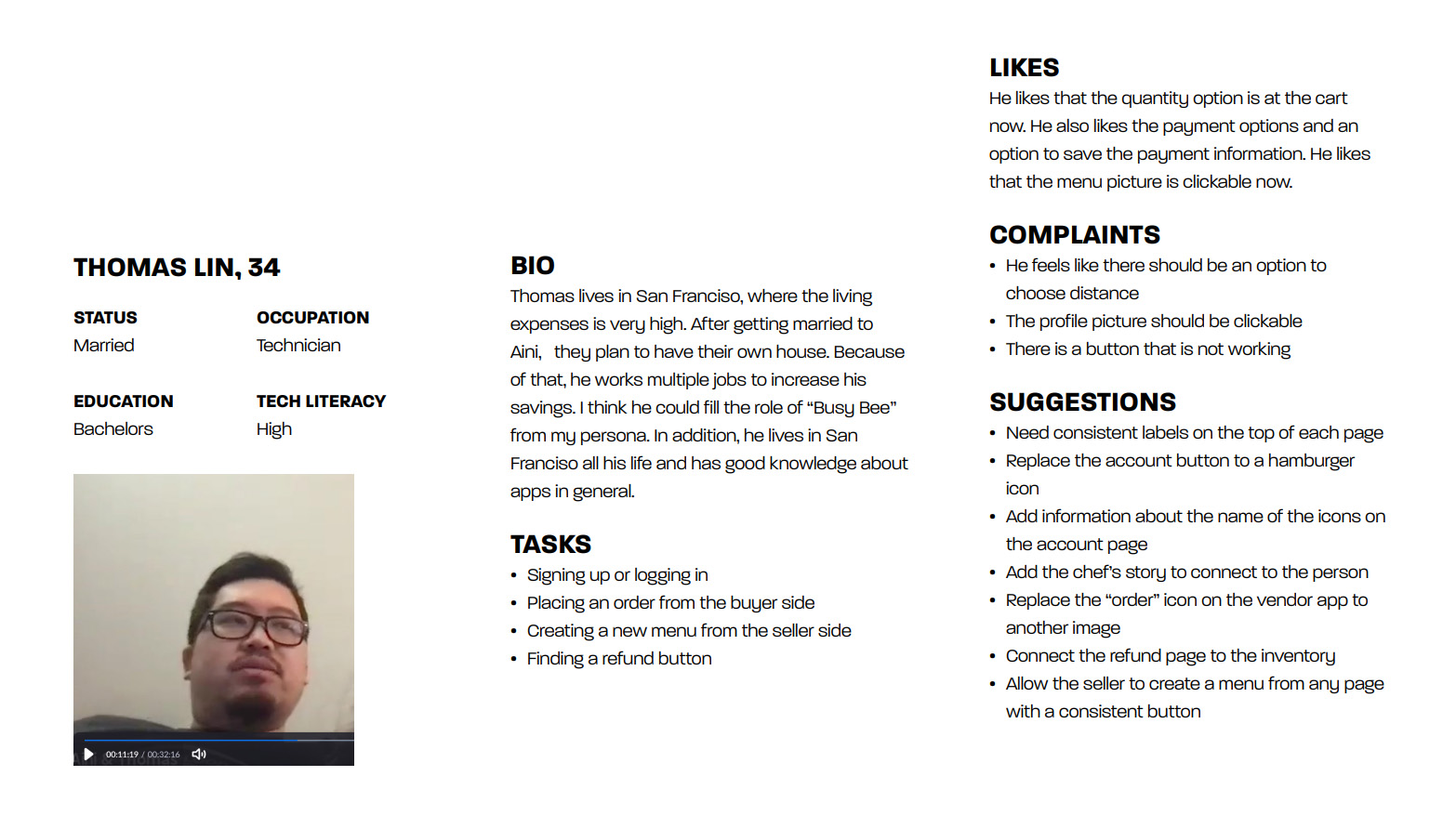
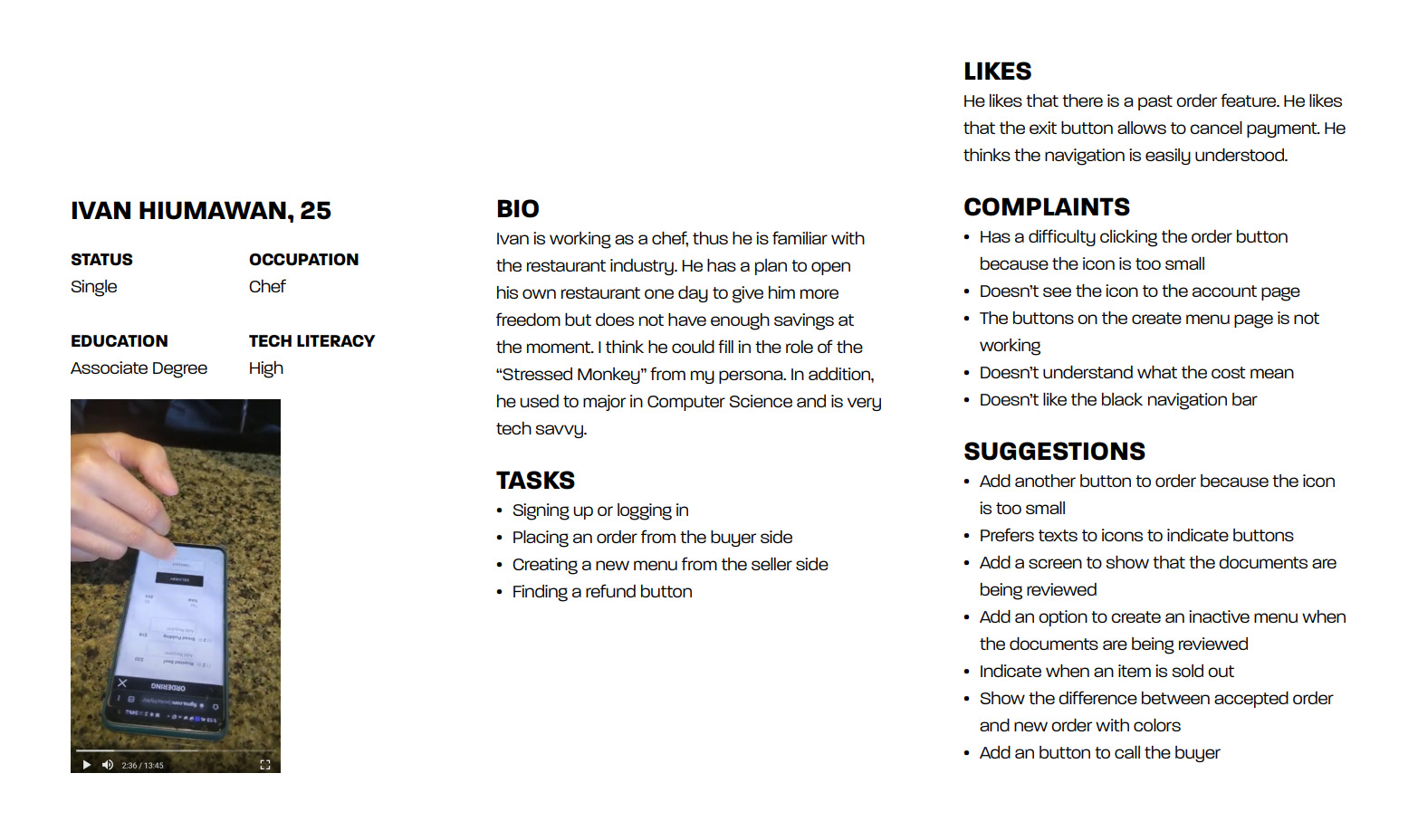
HI-FI WIREFRAME →
TAKE USERS' SUGGESTIONS
AND APPLY THEM TO HI-FIDELITY WIREFRAME.
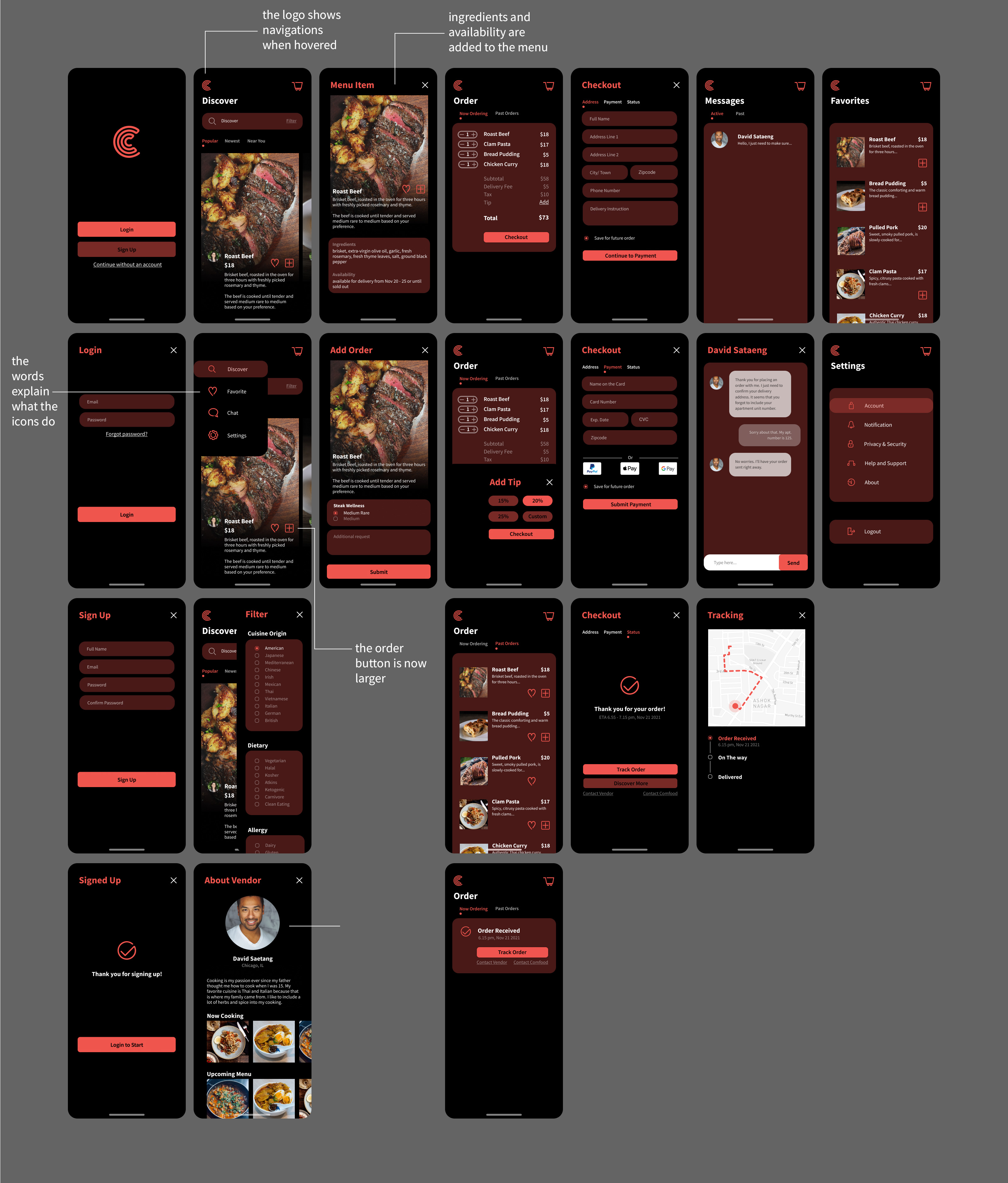
SELLER WIREFRAME.
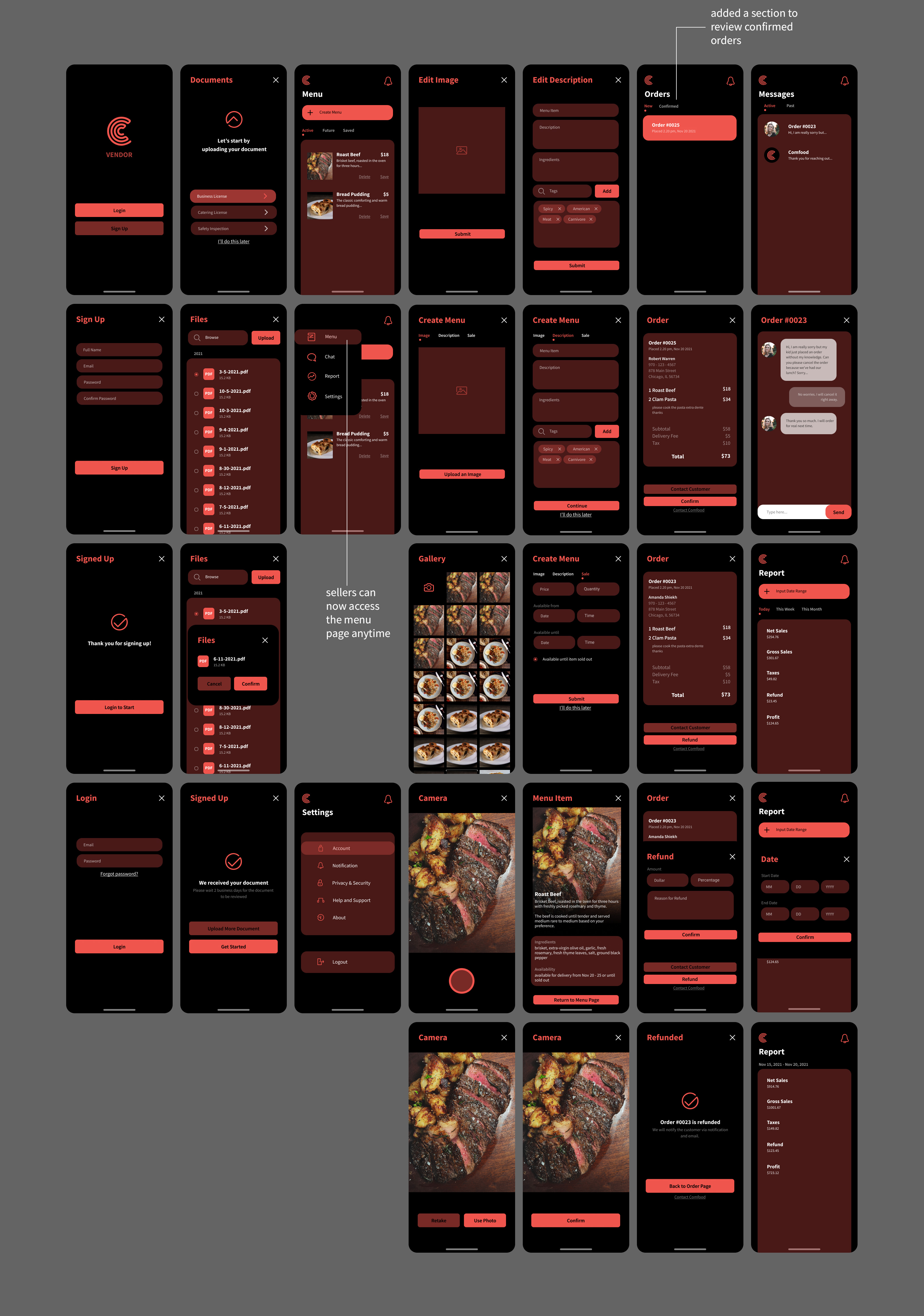
HI-FI PROTOYPE →
BUYER PROTOYPE.
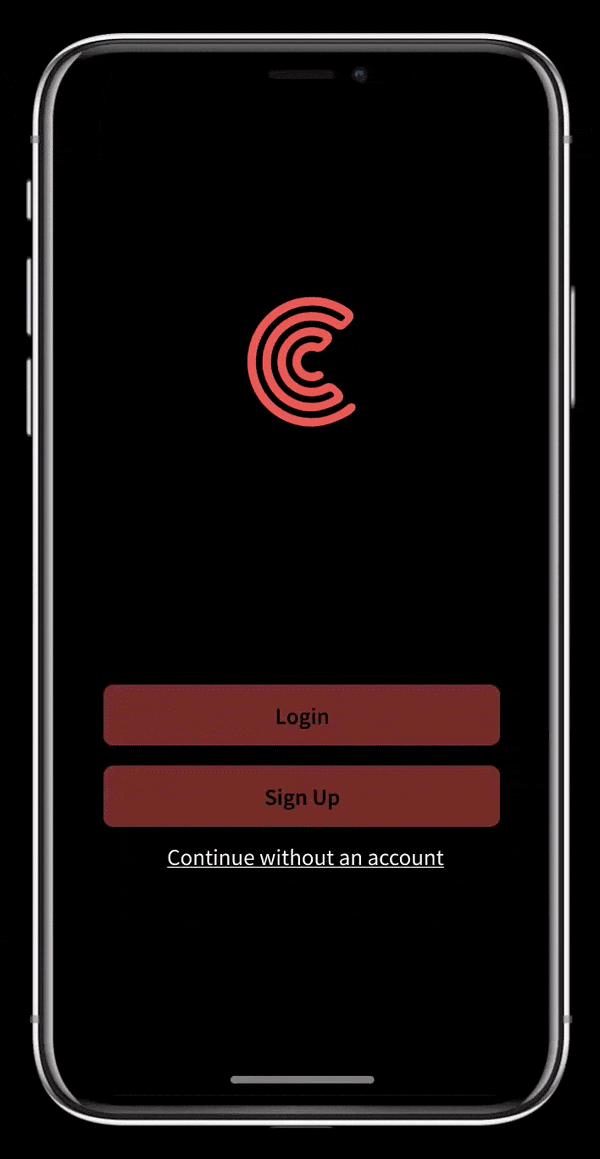
SELLER PROTOYPE.
